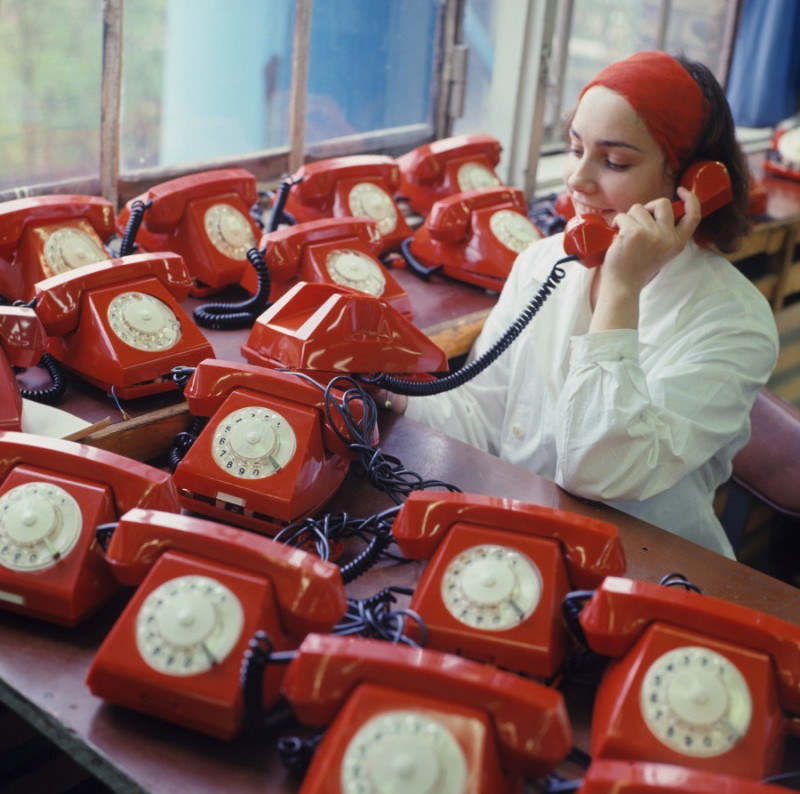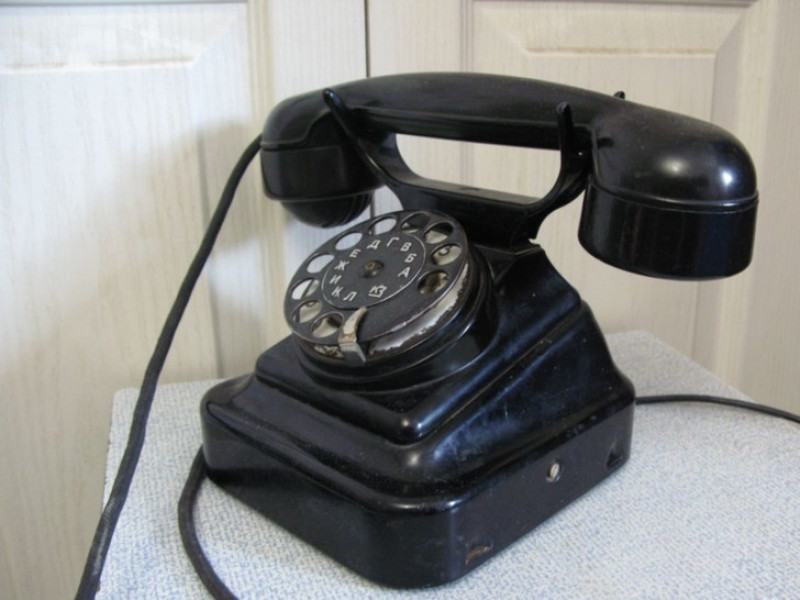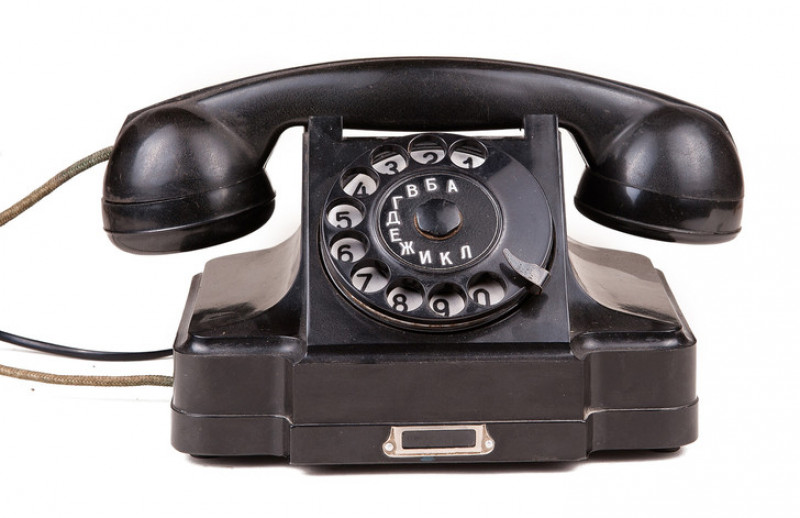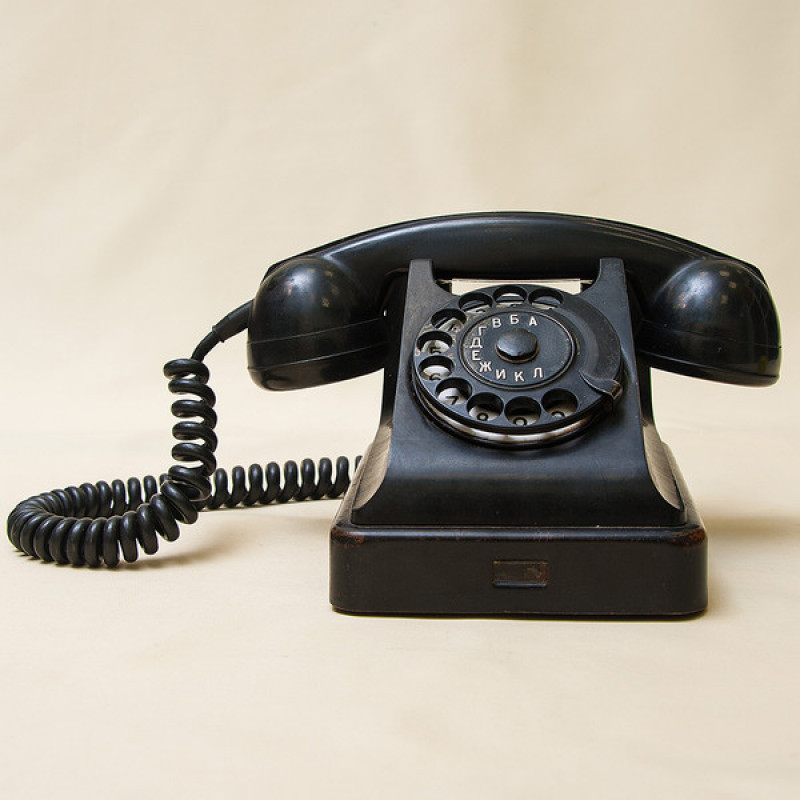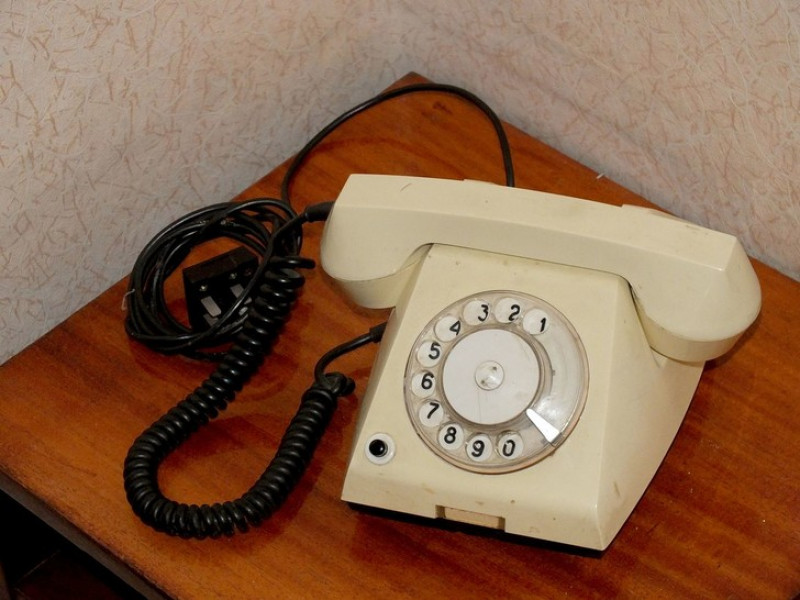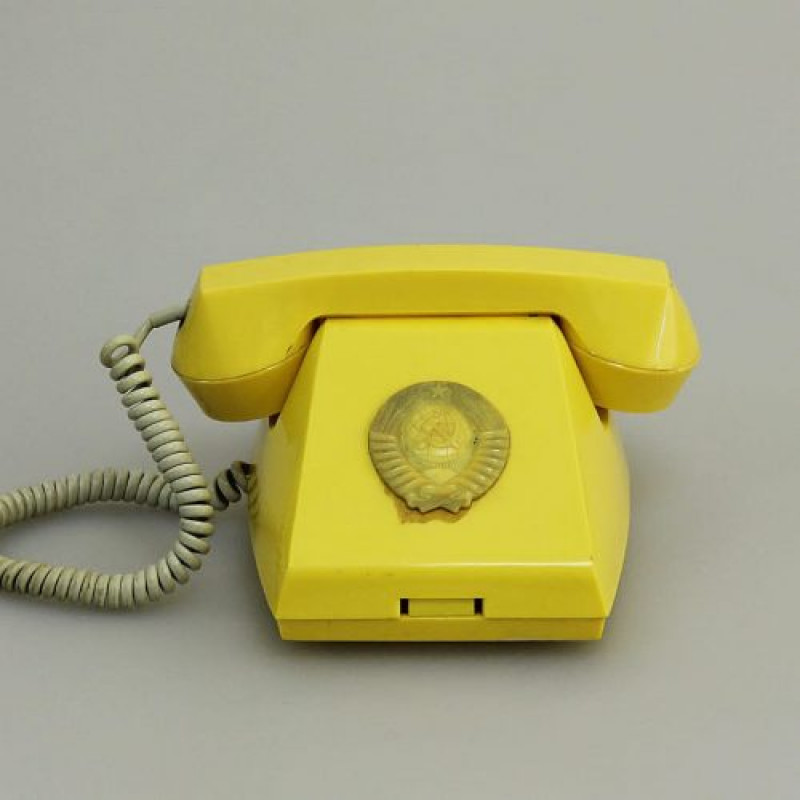Для советского человека телефон имел особое значение: даже в середине 80-х в столице хватало квартир без проведенных в них линий. В коммуналках стоял один аппарат на всех, в поселках в 20 км от Москвы телефоны были редкостью, что уж говорить про остальную страну.
И даже при наличии телефона всегда велики были шансы не дозвониться: не застать человека дома или нарваться на наглухо занятую линию, потому что кто-то на том конце заболтался или плохо положил трубку. А уж междугородные звонки и вовсе были приключением.
Межгород надо было заказывать к определенному времени, а телефонистки имели возможность слушать разговор и часто не стеснялись это делать. Впрочем, отсутствие конфиденциальности разговоров подразумевалось всегда. То, что вашу линию может прослушивать товарищ майор, причем без всякого на то ордера, советский человек принимал как данность.
А путаница, когда к беседе внезапно подключалась другая линия («Ой, кто это? Повесьте немедленно трубку!» — «Сами повесьте!»), вообще была обычным делом.
Словом, телефонный аппарат в СССР был окутан ореолом мистики, романтики и непредсказуемости. К тому же вид этих устройств почти всегда был неплох — как и все остальные, советские дизайнеры тоже питали к телефонам теплые чувства. А из какого материала делали аппараты в 30-х — 50-х годах!
Бакелит, он же карболит, был тяжелым, ударопрочным и твердым, то есть устойчивым к царапинам. Трубкой такого телефона запросто можно было оглушить оппонента. В общем, нам немного не хватает этих старых советских телефонов.
Хотя есть умельцы, которые подключают к старым аппаратам GSM-модуль, что позволяет снова ими пользоваться без подключения проводных линий. Хотя носить их с собой, пожалуй, было бы немного неудобно.
Вернёмся к теме статьи:
Телефон ленинградской фабрики «Красная заря», 1930-е годы. Вещь одновременно массивная и изящная.
Аппарат ТАН-6м производства Пермского телефонного завода. Конец 1950-х. Буквы на внутренней части диска нанесены светящейся краской.
VEF БАГТА-50 выпускали на Рижском государственном электротехническом заводе «ВЭФ» в Латвийской ССР с 1950 по 1965 год. Это был, наверное, самый массовый аппарат в стране в те годы.
VEF ТА-68, самый распространенный в СССР аппарат в 1970-е — 1980-е годы.
VEF ТА-68 без номеронабирателя. Такой использовали в заоблачно высоких кабинетах. При снятии трубки происходило соединение с телефонисткой, которой можно было просто сказать: «С директором главка меня соедините, пожалуйста», не напрягая мозг запоминанием номеров и обходясь без записных книжек.
ТА-1158 «Тон» Пермского телефонного завода, 1980-е годы. Одна из последних разработок предприятия, сувенирно-подарочная вещь. Не очень изящная, но оригинальная.
Индустриальный телефон ТА-1321 (Пермский телефонный завод). Был рекомендован к применению в металлургических цехах и на горнодобывающих предприятиях, в том числе на шахтах, невзрывоопасных по пыли и газу.
Продукция Польской социалистической республики: Jaskier-74.
«Спектр» ТА-1128, Пермский телефонный завод, 1980-е. Вроде бы только компоновка изменена, а вид совсем другой, заграничный.
Чешское изделие с космическим дизайном — Tesla Stropkov DS2300. Редкая и модная вещь.
Детский телефон был чудом техники и заветной мечтой многих. Помните рассказ Николая Носова «Телефон»? А нынешние дети, скорее всего, уже не поймут, о чем там вообще речь.
VEF СТА-2, «вертушка» — аппарат для правительственной секретной связи. Устанавливали их только специально обученные офицеры. А название «вертушка» прижилось, когда в Кремле появились первые в стране телефоны с дисковым набором.
См.также:
Музей Истории Телефона
Винтажные девушки и… телефон!
Как появилось слово «Алло», и что говорят, принимая телефонный звонок в других странах
Гробовщик-телефонист Элмон Строуджер
Мобильная система «Алтай»
В Телеграм!
Домашние телефоны нашей юности. Найди свой
Сколько же приятных воспоминаний связано с этими маленькими аппаратами. Недавно в комиссионке увидел наш первый домашний телефон-не удержался, попросил девушку показать аппарат. Минут десять я вертел его в руках-прям бальзам души.
В СССР выбор моделей телефонов был не такой большой, однако за многие годы у населения накопился достаточный ассортимент. Были массовые модели из серии «классика» и были очень редкие аппараты, но о них позже.
Попробуйте угадать самый популярный телефонный аппарат СССР. Угадали? Тогда перелистните на следующий кадр.
Самый старый телефонный аппарат, который я помню, был у нас на вахте техникума. За день сотни людей пользовались им и тем не менее он без поломок отработал два десятка лет-умели делать качественно и надежно:
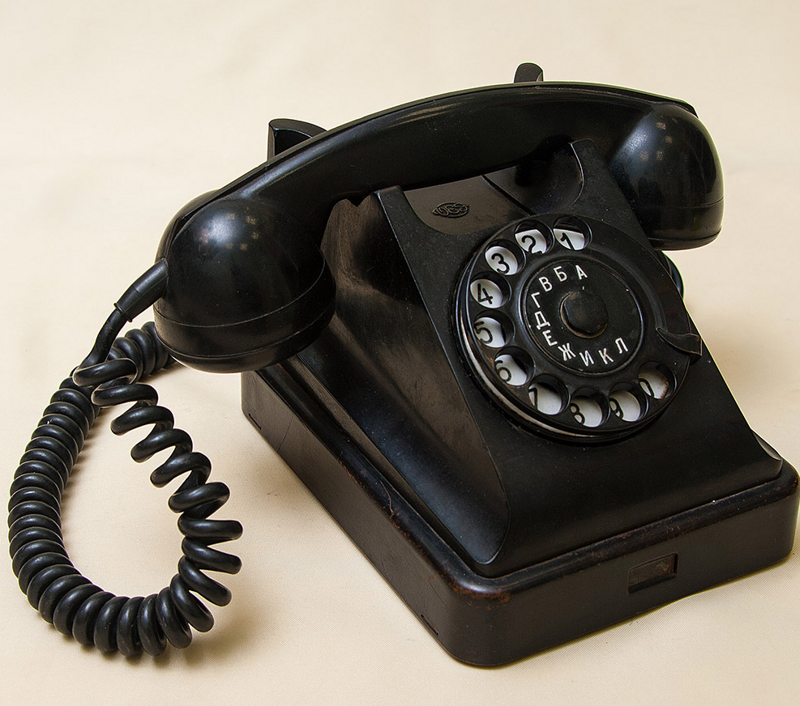
Телефонный аппарат БАГТА-50 (ВЭФ)
На диске номеронабирателя были еще буквы полустертые, которые отменили в 1968 году
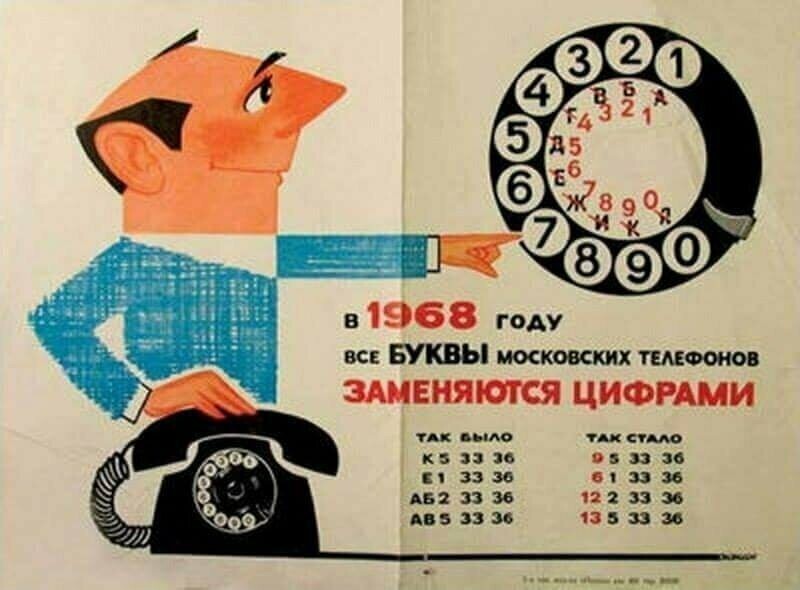
Из старых телефонов еще попадались настенные аппараты-их часто использовали в коммуналках и общежитиях
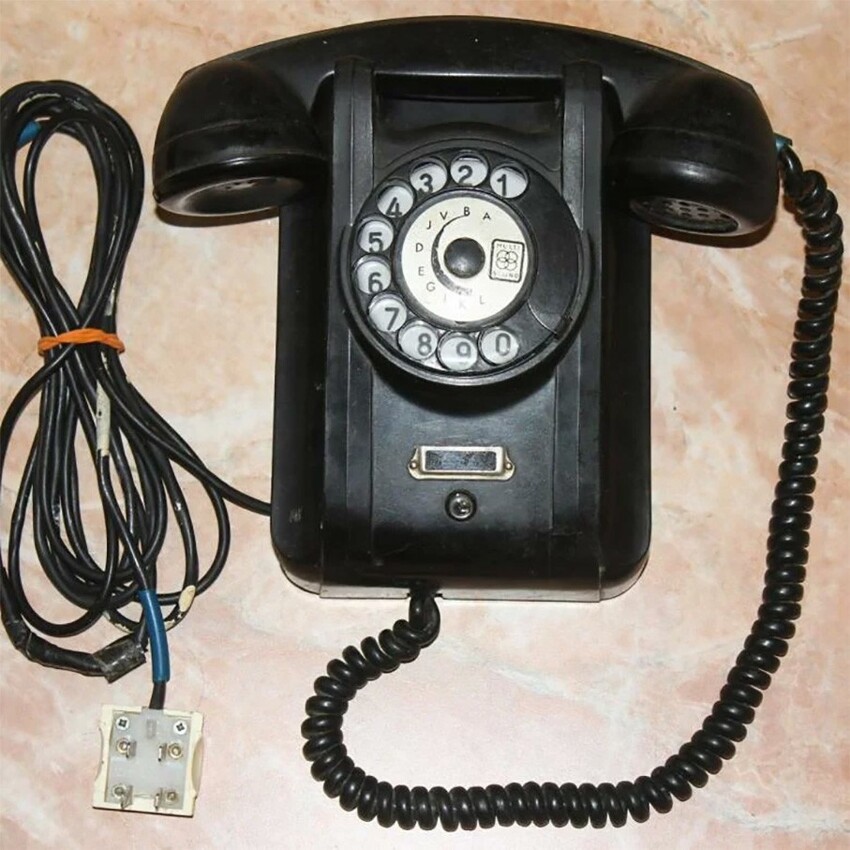
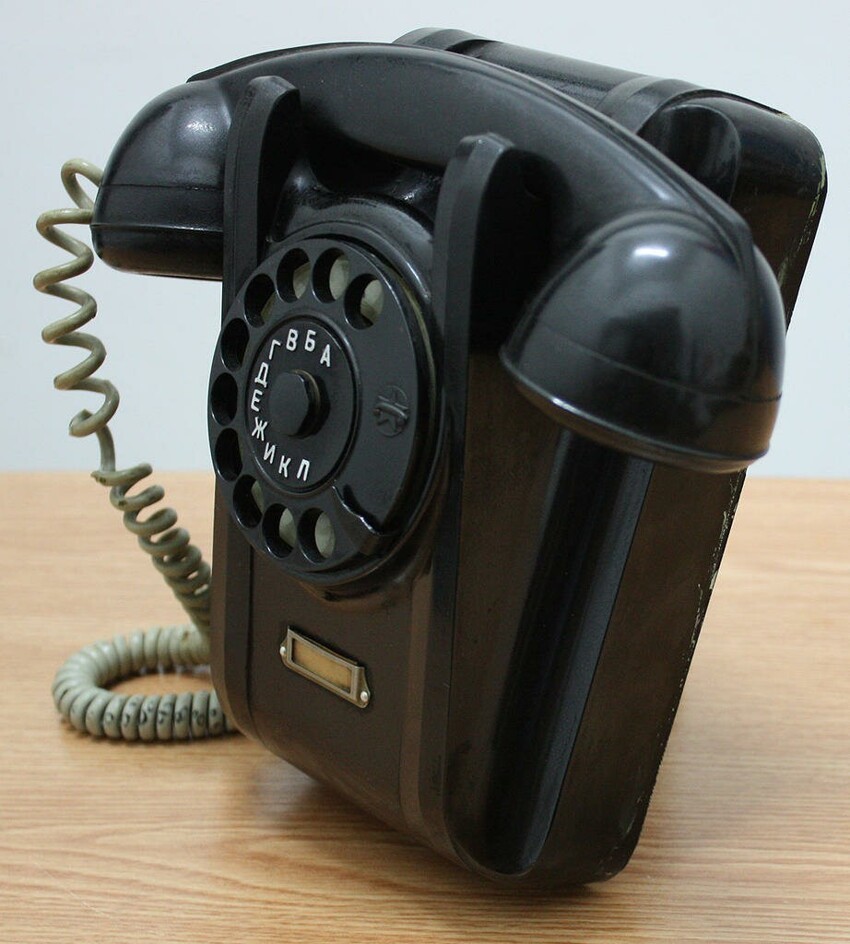
Ну а теперь о самых массовых телефонных аппаратах СССР:
ТА-68 был любимцем не только в квартирах советских граждан, но и многих госучреждений.
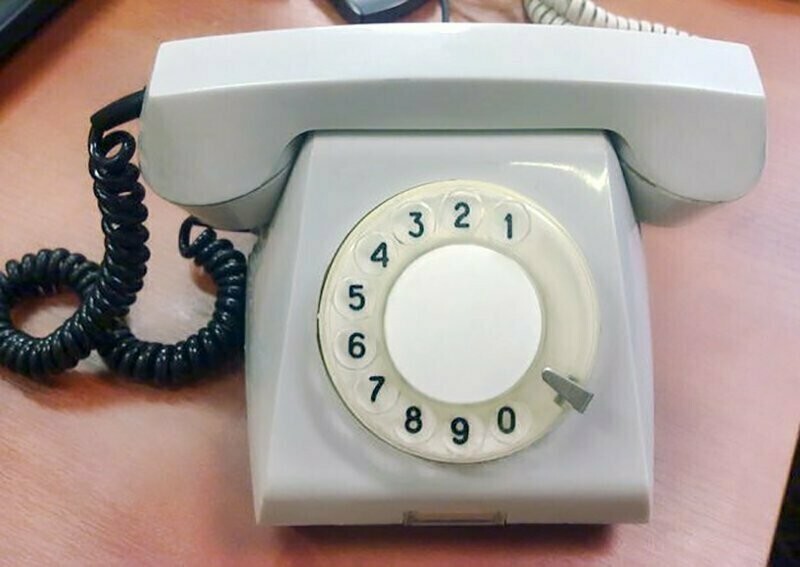
Не сильно от него отличался ТАН-70

Так же были популярны ТА-72
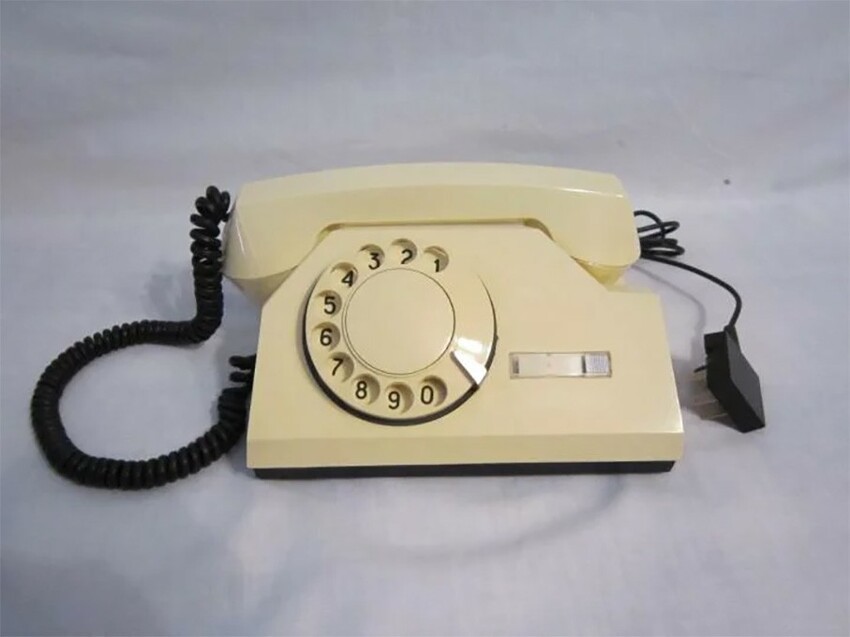
Очень симпатичной была модель ТА 3100, но почему то встречалась очень редко
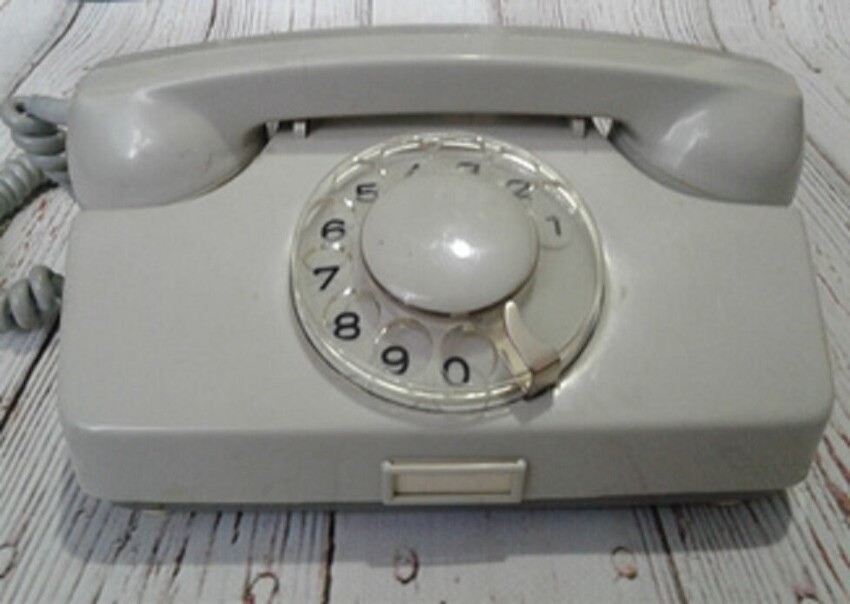
Позже начали выпускать серию «Спектр». У них номеронабиратели были другой конструкции и диск вращался гораздо приятнее.
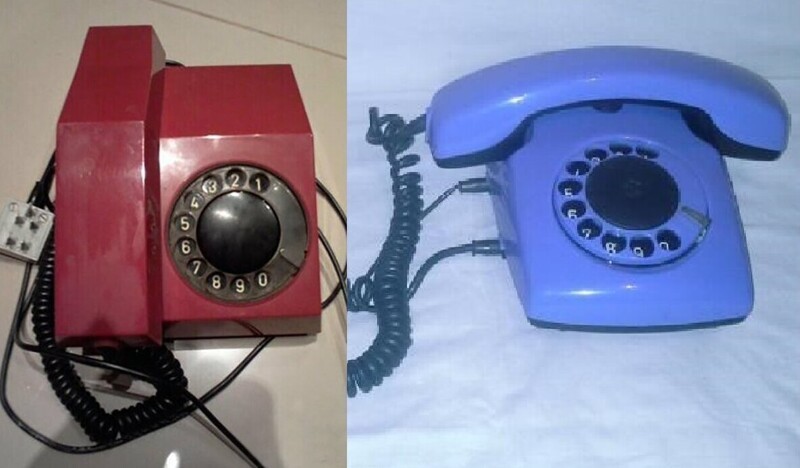
Нельзя обойти вниманием ВЭФ ТА Д. Там был выдвижной блокнотик. В процессе разговора невольно нажимаешь на кнопку и панелька выезжает, но не помню, чтобы я там хоть раз видел записи….
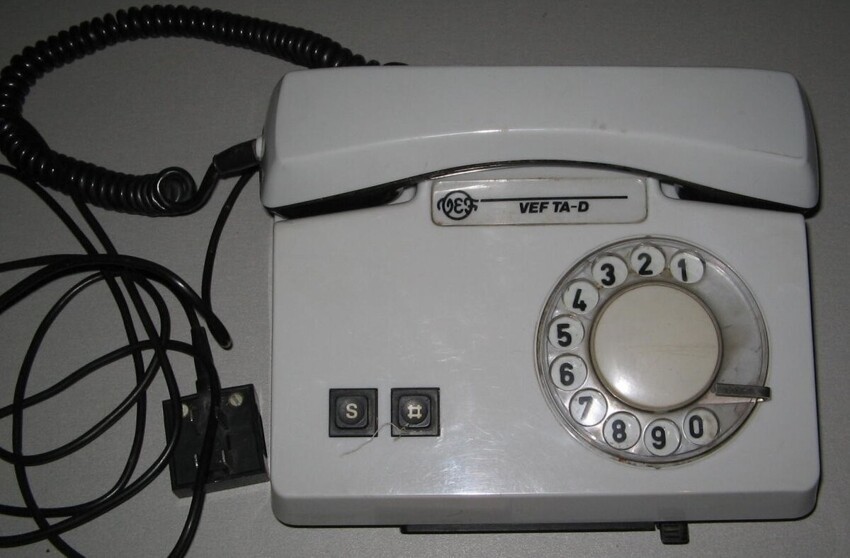
Для модников выпускали аппараты серии «Ретро», с оригинальным оформлением
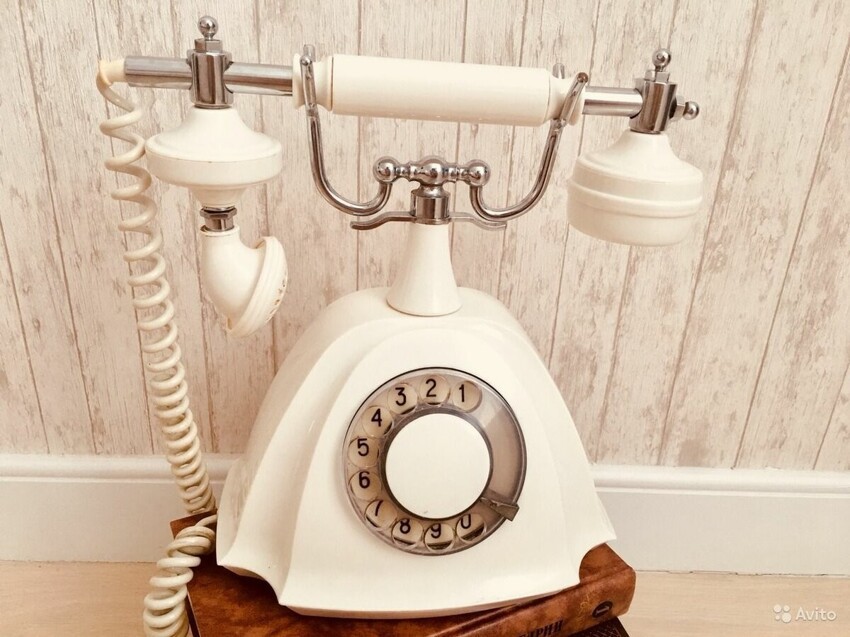
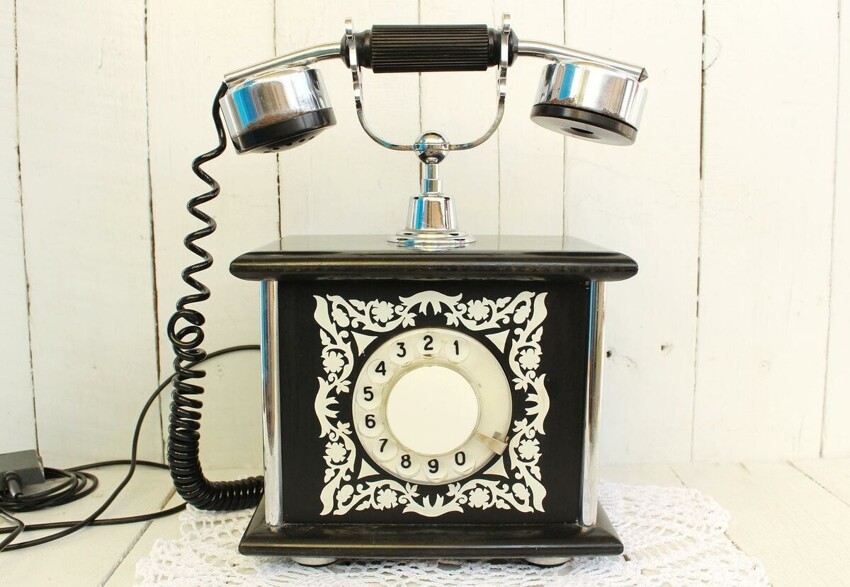
В СССР производство телефонных аппаратов было сконцентрировано на двух крупных заводах: Пермский телефонный завод и ВЭФ. Кроме внутреннего рынка, они поставляли продукцию еще и в другие соцстраны. В СССР так же завозили телефонные аппараты производства предприятий соцстран.
Польша поставляла телефоны серии «Тюльпан»
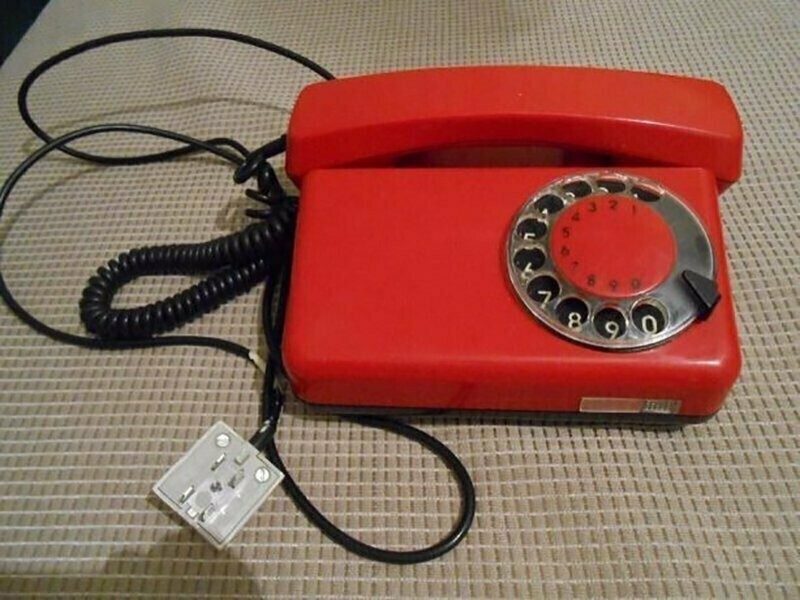
и серии «Братек», а ВЭФ выпускал точно такой аппарат «Марта»)
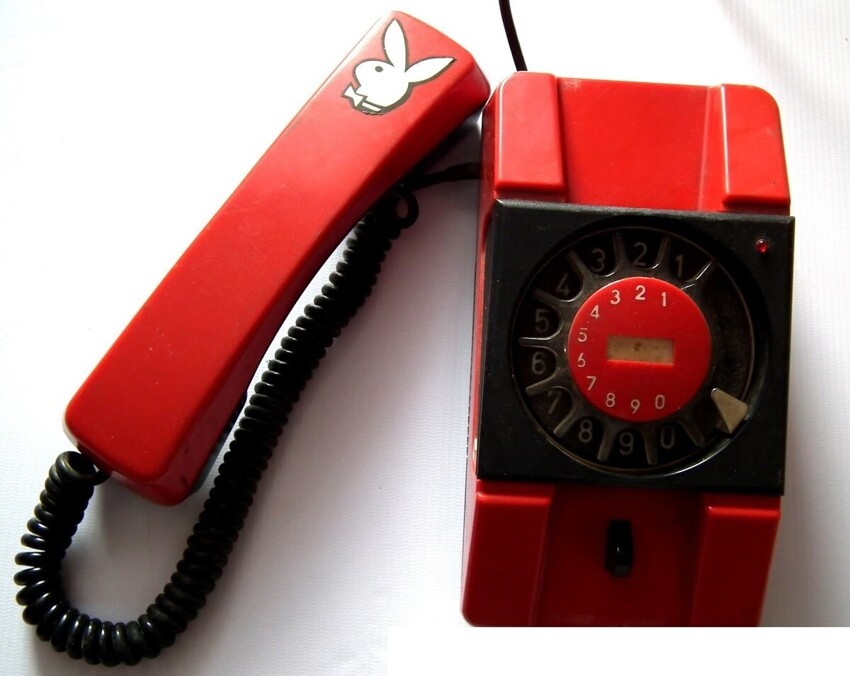
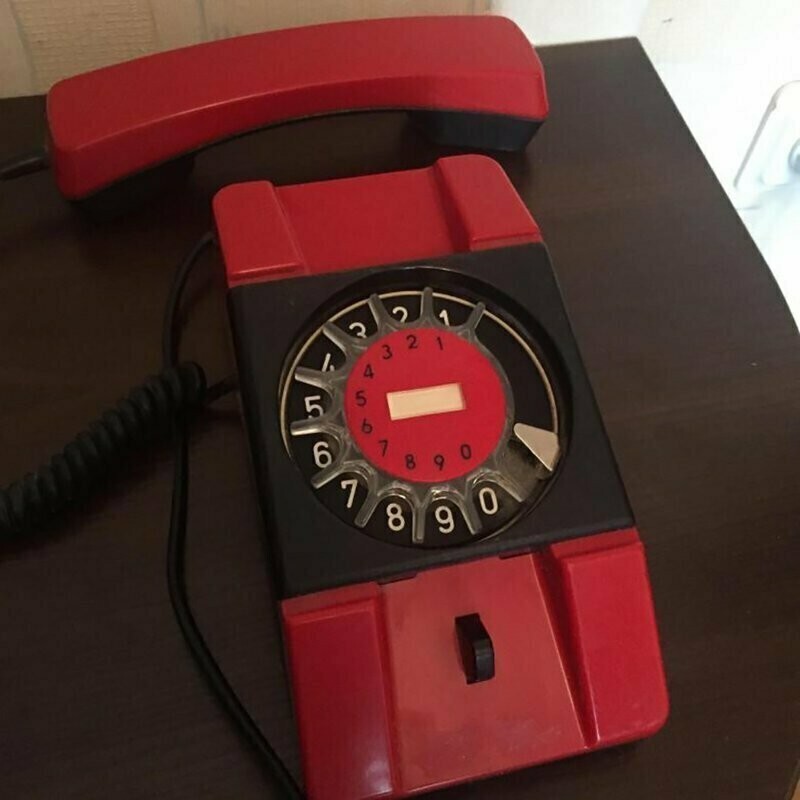
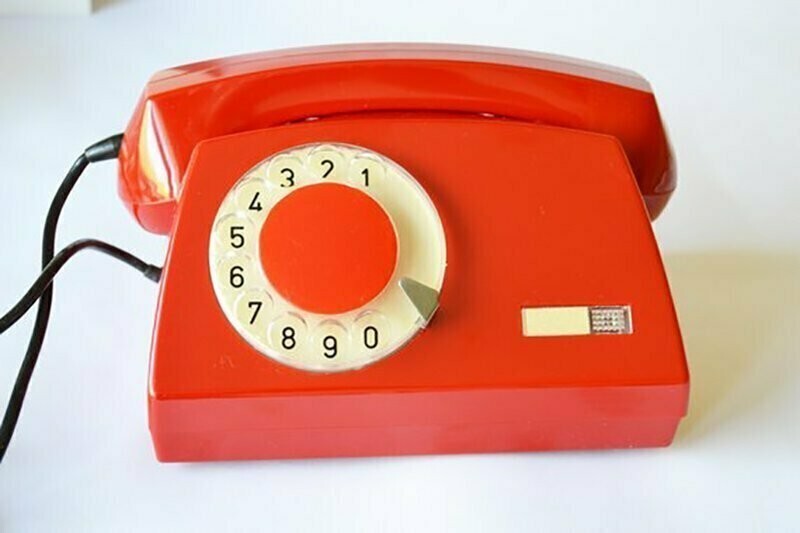
Болгария поставляла аппараты серии «Белоградчик»
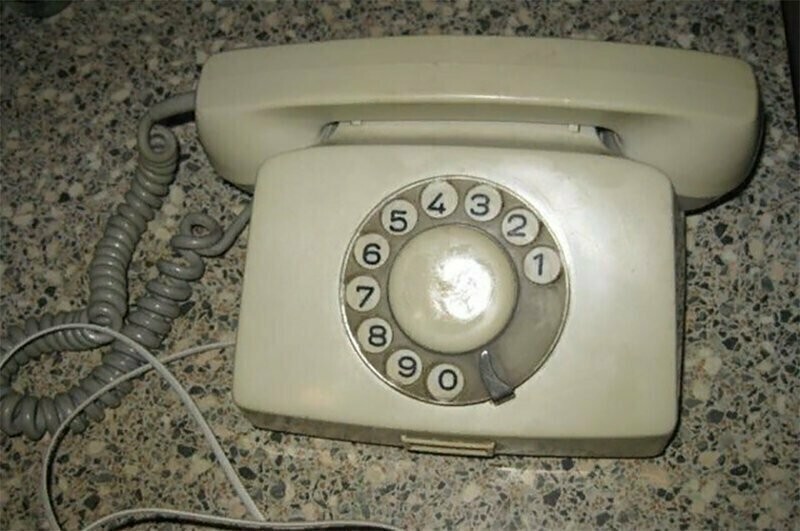
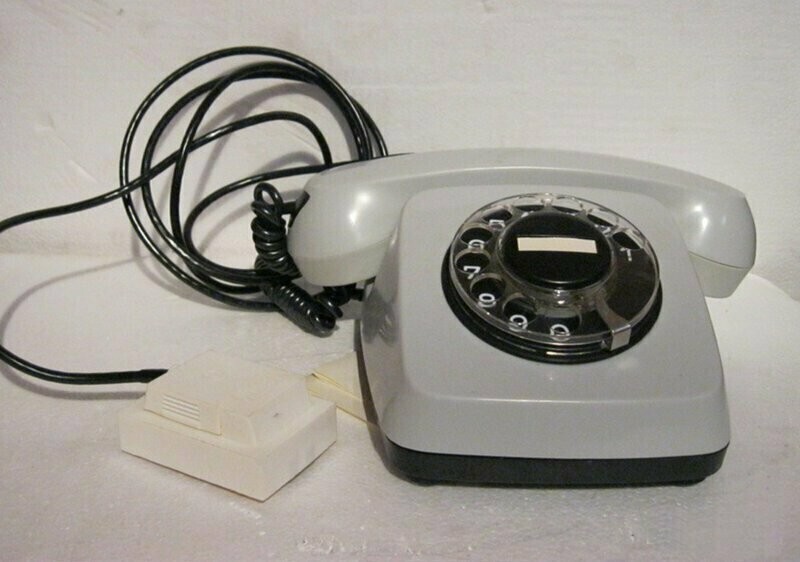
Венгрия поставляла модели серии «СВ»
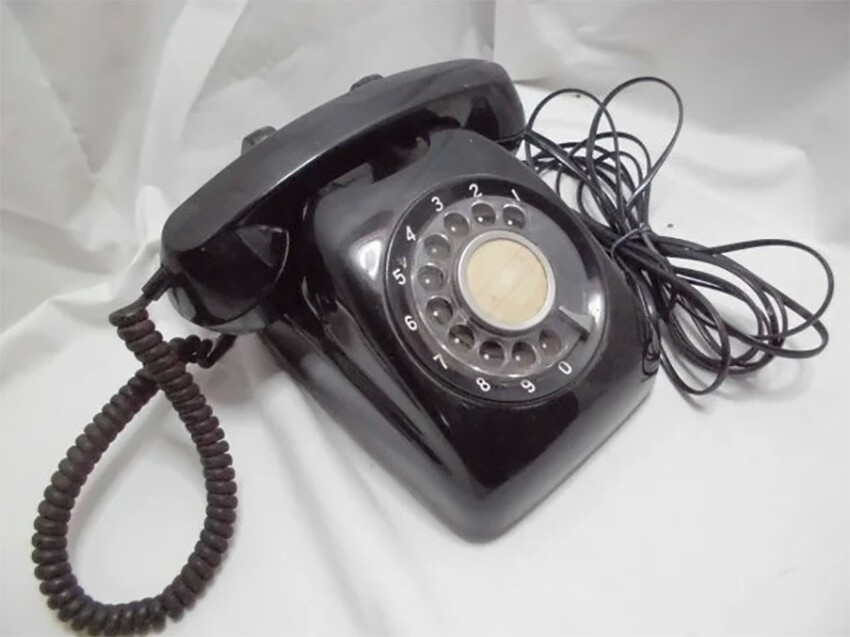
ГДР поставляла аппараты моделей W58 (61,63,66)
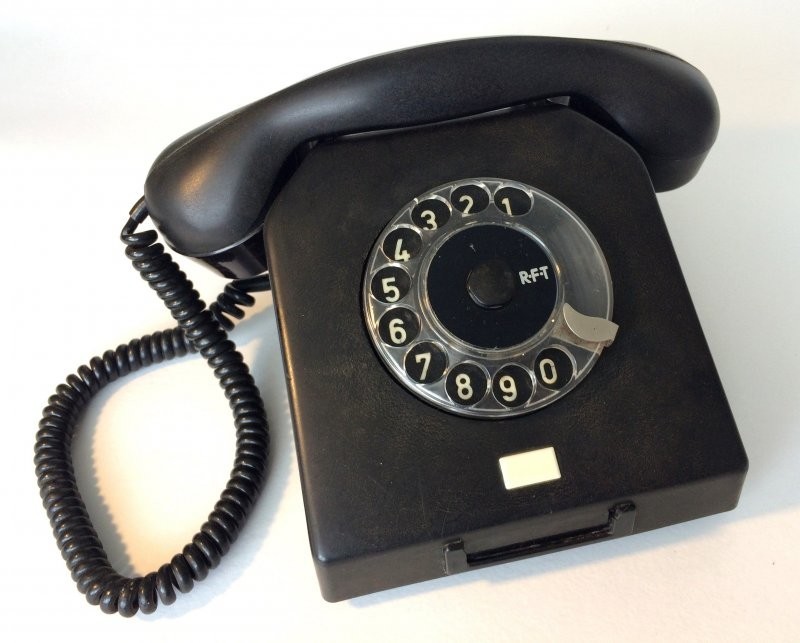
За Чехословацкими аппаратами «TESLA» шла настоящая охота
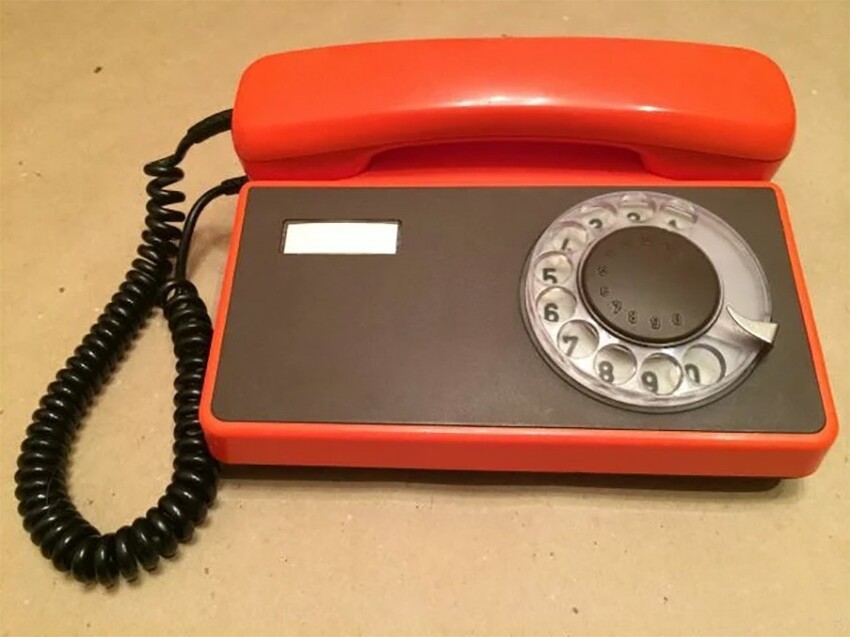
Не забывали и о детях-для них выпускали комплекты телефонов
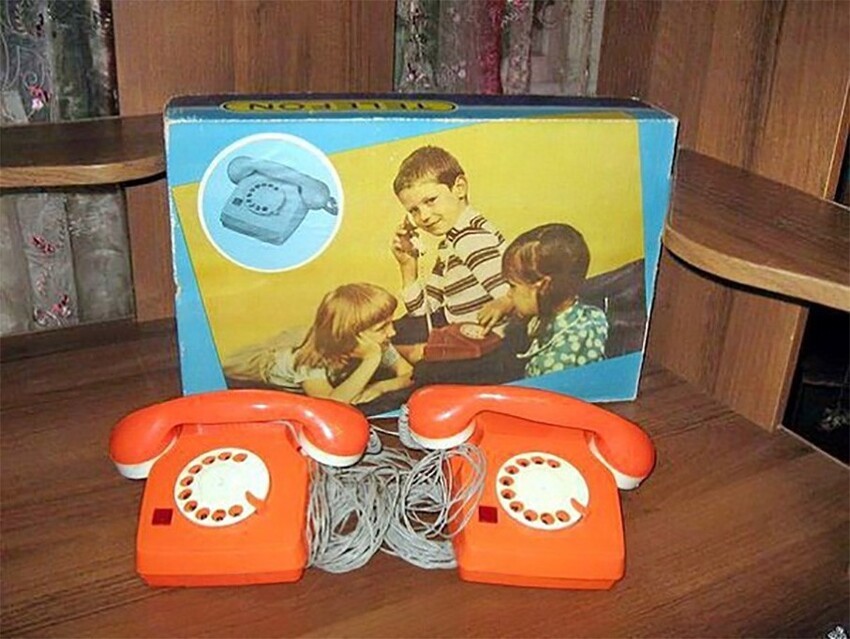

За всю жизнь видел множество различных телефонных аппаратов, но только недавно узнал о существовании телефонов не с дисковым номеронабирателем, а с роторным!
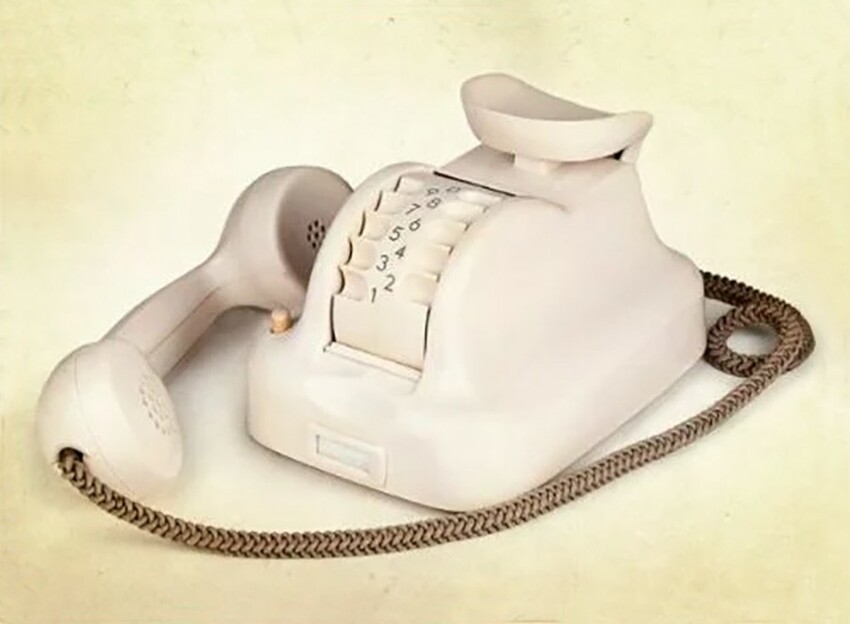
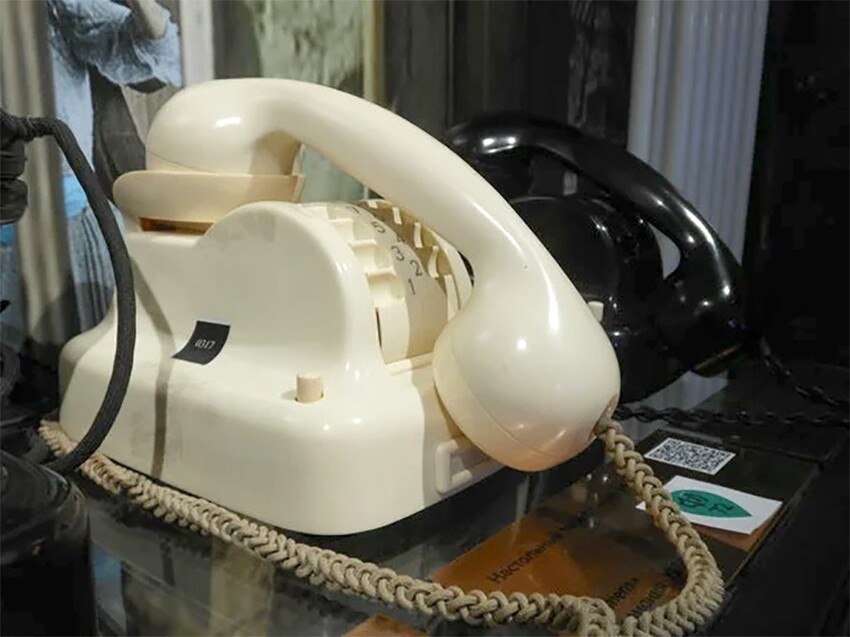
Потом пришла эра кнопочных номеронабирателей ……
Источник:
Ссылки по теме:
От автора: Сколько же приятных воспоминаний связано с этими маленькими аппаратами. Недавно в комиссионке увидел наш первый домашний телефон-не удержался, попросил девушку показать аппарат. Минут десять я вертел его в руках-прям бальзам души.
В СССР выбор моделей телефонов был не такой большой, однако за многие годы у населения накопился достаточный ассортимент. Были массовые модели из серии «классика» и были очень редкие аппараты, но о них позже.
Самый старый телефонный аппарат, который я помню, был у нас на вахте техникума. За день сотни людей пользовались им и тем не менее он без поломок отработал два десятка лет — умели делать качественно и надежно:
Телефонный аппарат БАГТА-50 (ВЭФ)
На диске номеронабирателя были еще буквы полустертые, которые отменили в 1968 году
Из старых телефонов еще попадались настенные аппараты-их часто использовали в коммуналках и общежитиях
Ну а теперь о самых массовых телефонных аппаратах СССР:
ТА-68 был любимцем не только в квартирах советских граждан, но и многих госучреждений.
Не сильно от него отличался ТАН-70
Так же были популярны ТА-72
Очень симпатичной была модель ТА 3100, но почему то встречалась очень редко
Позже начали выпускать серию «Спектр». У них номеронабиратели были другой конструкции и диск вращался гораздо приятнее.
Нельзя обойти вниманием ВЭФ ТА Д. Там был выдвижной блокнотик. В процессе разговора невольно нажимаешь на кнопку и панелька выезжает, но не помню, чтобы я там хоть раз видел записи…
Для модников выпускали аппараты серии «Ретро», с оригинальным оформлением
В СССР производство телефонных аппаратов было сконцентрировано на двух крупных заводах: Пермский телефонный завод и ВЭФ. Кроме внутреннего рынка, они поставляли продукцию еще и в другие соцстраны. В СССР так же завозили телефонные аппараты производства предприятий соцстран.
Польша поставляла телефоны серии «Тюльпан»
и серии «Братек», а ВЭФ выпускал точно такой аппарат «Марта»)
Серия «Астра»
Болгария поставляла аппараты серии «Белоградчик»
Венгрия поставляла модели серии «СВ»
ГДР поставляла аппараты моделей W58 (61,63,66)
За Чехословацкими аппаратами «TESLA» шла настоящая охота
Не забывали и о детях — для них выпускали комплекты телефонов
Вроде всю жизнь работал в связи и видел множество различных телефонных аппаратов, но только недавно узнал о существовании телефонов не с дисковым номеронабирателем, а с роторным!
как Вам такое чудо?
Потом пришла эра кнопочных номеронабирателей…
Actor portraying Alexander Graham Bell in a 1926 silent film. Shows Bell’s first telephone transmitter (microphone), invented 1876 and first displayed at the Centennial Exposition, Philadelphia.
This history of the telephone chronicles the development of the electrical telephone, and includes a brief overview of its predecessors. The first telephone patent was granted to Alexander Graham Bell in 1876.
Mechanical and acoustic devices[edit]
A 19th century acoustic tin can or «lovers’ telephone»
Before the invention of electromagnetic telephones, mechanical acoustic devices existed for transmitting speech and music over a greater distance. This distance was greater than that of normal direct speech. The earliest mechanical telephones were based on sound transmission through pipes or other physical media.[1] The acoustic tin can telephone, or «lovers’ phone», has been known for centuries.[1] It connects two diaphragms with a taut string or wire, which transmits sound by mechanical vibrations from one to the other along the wire (and not by a modulated electric current). The classic example is the children’s toy made by connecting the bottoms of two paper cups, metal cans, or plastic bottles with tautly held string.[1][2]
Some of the earliest known experiments were conducted by the British physicist and polymath, Robert Hooke, from 1664 to 1685.[1][3] An acoustic string phone made in 1667 has been attributed to him.[4] An early version was also found in use by the Chimu in Peru. The gourd and stretched-hide version resides in the Smithsonian Museum collection and dates back to around the 7th century AD.[5]
For a few years in the late 1800s, acoustic telephones were marketed commercially as a competitor to the electrical telephone. When the Bell telephone patents expired and many new telephone manufacturers began competing, acoustic telephone makers quickly went out of business. Their maximum range was very limited.[2] An example of one such company was the Pulsion Telephone Supply Company created by Lemuel Mellett in Massachusetts, which designed its version in 1888 and deployed it on railroad right-of-ways.
Additionally, speaking tubes have long been common, especially within buildings and aboard ships, and they are still in use today.[6]
Electrical devices[edit]
The telephone emerged from the making and successive improvements of the electrical telegraph. In 1804, Spanish polymath and scientist Francisco Salva Campillo constructed an electrochemical telegraph.[7] The first working telegraph was built by the English inventor Francis Ronalds in 1816 and used static electricity.[8] An electromagnetic telegraph was created by Baron Schilling in 1832. Carl Friedrich Gauss and Wilhelm Weber built another electromagnetic telegraph in 1833 in Göttingen. At the University of Gottingen, the two had been working together in the field of magnetism. They built the first telegraph to connect the observatory and the Institute of physics, which was able to send eight words per minute.[9]

Bell prototype telephone stamp
Centennial Issue of 1976
The electrical telegraph was first commercialized by Sir William Fothergill Cooke and entered use on the Great Western Railway in England. It ran for 13 mi (21 km) from Paddington station to West Drayton and came into operation on April 9, 1839.
Another electrical telegraph was independently developed and patented in the United States in 1837 by Samuel Morse. His assistant, Alfred Vail, developed the Morse code signaling alphabet with Morse. America’s first telegraph was sent by Morse on January 6, 1838, across 2 miles (3 km) of wiring.
Invention of the telephone[edit]
Credit for the invention of the electric telephone is frequently disputed, and new controversies over the issue have arisen from time to time. Antonio Meucci, Alexander Graham Bell, and Elisha Gray amongst others, have all been credited with the telephone’s invention. The early history of the telephone became and still remains a confusing morass of claims and counterclaims, which were not clarified by the huge number of lawsuits filed in order to resolve the patent claims of the many individuals and commercial competitors. The Bell and Edison patents, however, were commercially decisive, because they dominated telephone technology and were upheld by court decisions in the United States.
-

Philipp Reis, 1861, constructed the first telephone, today called the Reis telephone.
-


The master telephone patent granted to Bell, 174465, March 10, 1876
The modern telephone is the result of the work of many people.[10] Alexander Graham Bell was, however, the first to patent the telephone, as an «apparatus for transmitting vocal or other sounds telegraphically». Bell has most often been credited as the inventor of the first practical telephone. Johann Philipp Reis coined the term «telephon».[11] Models of it were sent abroad, to London, Dublin, Tiflis, and other places. It became a subject for popular lectures, and an article for scientific cabinets. Edison credited him as the «first inventor of the telephone.»[12]
The Italian-American inventor and businessman Antonio Meucci has been recognized by the U.S. House of Representatives for his contributory work on the telephone.[13] Several other controversies also surround the question of priority of invention for the telephone.
The Elisha Gray and Alexander Bell telephone controversy considers the question of whether Bell and Gray invented the telephone independently and, if not, whether Bell stole the invention from Gray. This controversy is narrower than the broader question of who deserves credit for inventing the telephone, for which there are several claimants.
The Canadian Parliamentary Motion on Alexander Graham Bell article reviews the controversial June 2002 United States House of Representatives resolution recognizing Meucci’s contributions ‘in’ the invention of the telephone (not ‘for’ the invention of the telephone). The same resolution was not passed in the U.S. Senate, thus labeling the House resolution as «political rhetoric». A subsequent counter-motion was unanimously passed in Canada’s Parliament 10 days later which declared Bell its inventor. This webpage examines critical aspects of both the parliamentary motion and the congressional resolution.
Telephone exchange[edit]
The main users of the electrical telegraph were post offices, railway stations, the more important governmental centers (ministries), stock exchanges, very few nationally distributed newspapers, the largest internationally important corporations, and wealthy individuals.[14]
Telegraph exchanges worked mainly on a store and forward basis. Although telephones devices were in use before the invention of the telephone exchange, their success and economical operation would have been impossible with the schema and structure of the contemporary telegraph systems.
Prior to the invention of the telephone switchboard, pairs of telephones were connected directly with each other, which was primarily useful for connecting a home to the owner’s business (They practically functioned as a primitive intercom).[15] A telephone exchange provides telephone service for a small area. Either manually by operators, or automatically by machine switching equipment, it interconnects individual subscriber lines for calls made between them. This made it possible for subscribers to call each other at homes, businesses, or public spaces. These made telephones an available and comfortable communication tool for many purposes, and it gave the impetus for the creation of a new industrial sector.
The telephone exchange was an idea of the Hungarian engineer Tivadar Puskás (1844–1893) in 1876, while he was working for Thomas Edison on a telegraph exchange.[16][17][18][19][20] The first commercial telephone exchange was opened at New Haven, Connecticut, with 21 subscribers on 28 January 1878,[21] in a storefront of the Boardman Building in New Haven, Connecticut. George W. Coy designed and built the world’s first switchboard for commercial use. Coy was inspired by Alexander Graham Bell’s lecture at the Skiff Opera House in New Haven on 27 April 1877.[21]
In Bell’s lecture, during which a three-way telephone connection with Hartford and Middletown, Connecticut, was demonstrated, he first discussed the idea of a telephone exchange for the conduct of business and trade. On 3 November 1877, Coy applied for and received a franchise from the Bell Telephone Company for New Haven and Middlesex Counties. Coy, along with Herrick P. Frost and Walter Lewis, who provided the capital, established the District Telephone Company of New Haven on 15 January 1878.[21]
The switchboard built by Coy was, according to one source, constructed of «carriage bolts, handles from teapot lids and bustle wire.» According to the company records, all the furnishings of the office, including the switchboard, were worth less than forty dollars. While the switchboard could connect as many as sixty-four customers, only two conversations could be handled simultaneously and six connections had to be made for each call.[21]
The District Telephone Company of New Haven went into operation with only twenty-one subscribers, who paid $1.50 per month. By 21 February 1878, however, when the first telephone directory was published by the company, fifty subscribers were listed. Most of these were businesses and listings such as physicians, the police, and the post office; only eleven residences were listed, four of which were for persons associated with the company.[21]
The New Haven District Telephone Company grew quickly and was reorganized several times in its first years. By 1880, the company had the right from the Bell Telephone Company to service all of Connecticut and western Massachusetts. As it expanded, the company was first renamed Connecticut Telephone, and then Southern New England Telephone in 1882.[21] The site of the first telephone exchange was granted a designation as a National Historic Landmark on 23 April 1965. However it was withdrawn in 1973 in order to demolish the building and construct a parking garage.[21]
Early telephone developments[edit]
The following is a brief summary of the history of the development of the telephone:
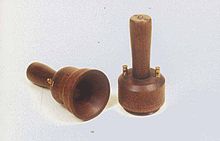

- Early 7th century AD — Chimu culture in Peru invents a string telephone using gourds and stretched hide. The original artifact is in the Smithsonian’s National Museum of the American Indian storage facility in Suitland, Maryland.
- 1667: Robert Hooke invents a string telephone that conveys sounds over an extended wire by mechanical vibrations. It was to be termed an ‘acoustic’ or ‘mechanical’ (non-electrical) telephone.
- 1753: Charles Morrison proposes the idea that electricity can be used to transmit messages, by using different wires for each letter.[22]
- 1844: Innocenzo Manzetti first moots the idea of a «speaking telegraph» (telephone).
- 1854: Charles Bourseul writes a memorandum on the principles of the telephone. (See the article: «Transmission électrique de la parole», L’Illustration, Paris, 26 August 1854.)
- 1854: Antonio Meucci demonstrates an electric voice-operated device in New York; exactly what kind of device he demonstrates is unknown.
- 1861: Philipp Reis constructs the first speech-transmitting telephone
- 28 December 1871: Antonio Meucci files a patent caveat (No. 3353, a notice of intent to invent, but not a formal patent application) at the U.S. Patent Office for a device he names a «Sound Telegraph».[23]
- 1872: Elisha Gray establishes Western Electric Manufacturing Company.
- 1 July 1875: Bell uses a bi-directional «gallows» telephone that is able to transmit «voicelike sounds», but not clear speech. Both the transmitter and the receiver are identical membrane electromagnet instruments.
- 1875: Thomas Edison experiments with acoustic telegraphy and in November builds an electro-dynamic receiver, but does not exploit it.
- 1875: Hungarian Tivadar Puskás (the inventor of the telephone exchange) arrives in the USA.
- 6 April 1875: Bell’s U.S. Patent 161,739 «Transmitters and Receivers for Electric Telegraphs» is granted. This uses multiple vibrating steel reeds in make-break circuits, and the concept of multiplexed frequencies.
- 20 January 1876: Bell signs and notarizes his patent application for the telephone.
- 11 February 1876: Elisha Gray designs a liquid transmitter for use with a telephone, but does not build one.
- 7 March 1876: Bell’s U.S. patent No. 174,465 for the telephone is granted.
- 10 March 1876: Bell transmits the sentence: «Mr. Watson, come here! I want to see you!» using a liquid transmitter and an electromagnetic receiver.
- 10 August 1876: Using the telegraph line between Brantford and Paris, Ontario, eight miles (thirteen kilometres) distant, Bell makes a telephone call, said by some to be the «world’s first long-distance call».[24]
- 30 January 1877: Bell’s U.S. patent No. 186,787 is granted for an electromagnetic telephone using permanent magnets, iron diaphragms, and a call bell.
- 27 April 1877: Edison files for a patent on a carbon (graphite) transmitter. Patent No. 474,230 is granted on 3 May 1892, after a 15-year delay because of litigation. Edison is later granted patent No. 222,390 for a carbon granules transmitter in 1879.
- 6 October 1877: Scientific American publishes the invention from Bell—at that time still without a ringer.
- 25 October 1877: the article in Scientific American is discussed at the Telegraphenamt in Berlin
- 12 November 1877: The first commercial telephone company enters telephone business in Friedrichsberg close to Berlin[25] using the Siemens pipe as ringer and telephone devices built by Siemens.
- 1877: The first experimental Telephone Exchange is established in Boston.
- 1877: First long-distance telephone line
- 1877: Emile Berliner invents the telephone transmitter.
- 14 January 1878: Bell demonstrates the telephone to Queen Victoria and makes the first publicly-witnessed long-distance calls in the UK. The queen tries the device and finds it to be «quite extraordinary».[26]
- 26 January 1878: The first permanent telephone connection in the UK is made between two businesses in Manchester
- 28 January 1878: The first commercial US telephone exchange opens in New Haven, Connecticut.
- 15 June 1878: The first commercial toll line enters operation, connecting Springfield and Holyoke, Massachusetts[27]
- 1887: Tivadar Puskás introduces the multiplex switchboard, that has an epochal significance in the further development of telephone exchanges.[28]
- 1915: The first U.S. coast-to-coast long-distance telephone call, is ceremonially inaugurated by A.G. Bell in New York City and his former assistant Thomas Augustus Watson in San Francisco, California.
- 1927: The first transatlantic phone call is made, from the United States to the United Kingdom.[29]
Early commercial instruments[edit]
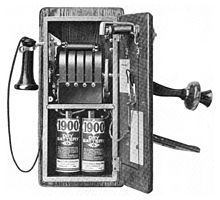
1917 wall telephone, open to show magneto and local battery
Early telephones were technically diverse. Some of them used liquid transmitters which soon went out of use. Others were dynamic: their diaphragms vibrated a coil of wire in the field of a permanent magnet or vice versa. Such sound-powered telephones survived in small numbers through the 20th century in military and maritime applications where the ability to create its own electrical power was crucial. Most, however, used Edison/Berliner carbon transmitters, which were much louder than the other kinds, even though they required induction coils, actually acting as impedance matching transformers to make it compatible to the line impedance. The Edison patents kept the Bell monopoly viable into the 20th century, by which time telephone networks were more important than the instrument.
Early telephones were locally powered by a dynamic transmitter. One of the jobs of outside plant personnel was to visit each telephone periodically to inspect the battery. During the 20th century, the «common battery» operation came to dominate, and was powered by the «talk battery» from the telephone exchange over the same wires that carried the voice signals. Late in the century, wireless handsets brought a revival of local battery power.
The earliest telephones had only one wire for transmitting and receiving of audio, and used a ground return path. The earliest dynamic telephones also had only one opening for sound, and the user listened and spoke into the same hole. Sometimes the instruments were operated in pairs at each end, making conversation more convenient but also more expensive.

Historical marker commemorating the first telephone central office in New York State (1878)
At first, telephones were leased in pairs to the subscriber, for example one for his home and one for his shop, and the subscriber had to arrange with telegraph contractors to construct a line between them. Users who wanted the ability to speak to three or four different shops, suppliers etc. would obtain and set up three or four pairs of telephones. Western Union, already using telegraph exchanges, quickly extended the principle to its telephones in New York City and San Francisco, and Bell was not slow in appreciating the potential.
Signaling began in an appropriately primitive manner. The user alerted the other end, or the exchange operator, by whistling into the transmitter. Exchange operation soon resulted in telephones being equipped with a bell, first operated over a second wire and later with the same wire using a condenser. Telephones connected to the earliest Strowger automatic exchanges had seven wires, one for the knife switch, one for each telegraph key, one for the bell, one for the push button and two for speaking.
Rural and other telephones that were not on a common battery exchange had hand cranked «magneto» generators to produce an alternating current to ring the bells of other telephones on the line and to alert the exchange operator.
In 1877 and 1878, Edison invented and developed the carbon microphone used in all telephones along with the Bell receiver until the 1980s. After protracted patent litigation, a federal court ruled in 1892 that Edison and not Emile Berliner was the inventor of the carbon microphone. The carbon microphone was also used in radio broadcasting and public address work through the 1920s.
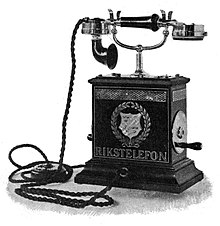
In the 1890s a new smaller style of telephone was introduced, the candlestick telephone, and it was packaged in three parts. The transmitter stood on a stand, known as a «candlestick» for its shape. When not in use, the receiver hung on a hook with a switch in it, known as a «switchhook.» Previous telephones required the user to operate a separate switch to connect either the voice or the bell. With the new kind, the user was less likely to leave the phone «off the hook». In phones connected to magneto exchanges, the bell, induction coil, battery, and magneto were in a separate bell box called a «ringer box.» In phones connected to common battery exchanges, the ringer box was installed under a desk, or other out of the way place, since it did not need a battery or magneto.
Cradle designs were also used at this time, with a handle with the receiver and transmitter attached, separate from the cradle base that housed the magneto crank and other parts. They were larger than the «candlestick» and more popular.
Disadvantages of single-wire operation, such as crosstalk and hum from nearby AC power wires, had already led to the use of twisted pairs and, for long-distance telephones, four-wire circuits. Users at the beginning of the 20th century did not place long-distance calls from their own telephones but made an appointment to use a special sound-proofed long-distance telephone booth furnished with the latest technology.
Around 1893, the country leading the world in telephones per 100 persons—known as teledensity—was Sweden with 0.55 in the whole country but 4 in Stockholm (10,000 out of a total of 27,658 subscribers).[30] This compares with 0.4 in the US for that year.[31] Telephone service in Sweden developed through a variety of institutional forms: the International Bell Telephone Company (a U.S. multinational), town and village co-operatives, the General Telephone Company of Stockholm (a Swedish private company), and the Swedish Telegraph Department (part of the Swedish government). Since Stockholm consists of islands, telephone service offered relatively large advantages, but had to use submarine cables extensively. Competition between Bell Telephone and General Telephone, and later between General Telephone and the Swedish Telegraph Dept., was intense.
In 1893, the U.S. was considerably behind Sweden, New Zealand, Switzerland, and Norway in teledensity. The U.S. became the world leadership in teledensity with the rise of many independent telephone companies after the Bell patents expired in 1893 and 1894.
20th-century developments[edit]
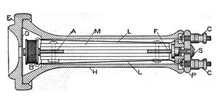
Old Receiver schematic, c.1906


Top of cellular telephone tower
By 1904, over three million phones in the U.S.[32] were connected by manual switchboard exchanges. By 1914, the U.S. was the world leader in telephone density and had more than twice the teledensity of Sweden, New Zealand, Switzerland, and Norway. The relatively good performance of the U.S. occurred despite competing telephone networks not interconnecting.[33] On January 7, 1927, W. S. Gifford, president of the American Telephone & Telegraph Company, called Evelyn P. Murray to test the first commercial telephone line across the Atlantic Ocean.[29]
What turned out to be the most popular and longest-lasting physical style of telephone was introduced in the early 20th century, including Bell’s model 102 telephone. A carbon granule transmitter and electromagnetic receiver were united in a single molded plastic handle, which when not in use were placed in a cradle in the base unit. The circuit diagram[34] of the model 102 shows the direct connection of the receiver to the line, while the transmitter was induction coupled, with energy supplied by a local battery. The coupling transformer, battery, and ringer were in a separate enclosure from the desk set. The rotary dial in the base interrupted the line current by repeatedly but very briefly disconnecting the line 1 to 10 times for each digit, and the hook switch (in the center of the circuit diagram) permanently disconnected the line and the transmitter battery while the handset was on the cradle.
Starting in the 1930s, the base of the telephone also enclosed its bell and induction coil, obviating the need for a separate ringer box. Power was supplied to each subscriber line by central-office batteries instead of the user’s local battery, which required periodic service. For the next half century, the network behind the telephone grew progressively larger and much more efficient, and, after the rotary dial was added, the instrument itself changed little until Touch-Tone signaling started replacing the rotary dial in the 1960s.
The history of mobile phones can be traced back to two-way radios permanently installed in vehicles such as taxicabs, police cruisers, railroad trains, and the like. Later versions such as the so-called transportables or «bag phones» were equipped with a cigarette-lighter plug so that they could also be carried, and thus could be used as either mobile two-way radios or as portable phones by being patched into the telephone network.
In December 1947, Bell Labs engineers Douglas H. Ring and W. Rae Young proposed hexagonal cell transmissions for mobile phones.[35] Philip T. Porter, also of Bell Labs, proposed that the cell towers be at the corners of the hexagons rather than the centers and have directional antennas that would transmit/receive in 3 directions (see picture at right) into 3 adjacent hexagon cells.[36][37] The technology did not exist then and the radio frequencies had not yet been allocated. Cellular technology was undeveloped until the 1960s, when Richard H. Frenkiel and Joel S. Engel of Bell Labs developed the electronics.
Meanwhile, the 1956 inauguration of the TAT-1 cable and later international direct dialing were important steps in putting together the various continental telephone networks into a global network.
On 3 April 1973, Motorola manager Martin Cooper placed a cellular-phone call (in front of reporters) to Dr. Joel S. Engel, head of research at AT&T’s Bell Labs. This began the era of the handheld cellular-mobile phone.
Cable-television companies began to use their fast-developing cable networks with ducting under the streets of the United Kingdom in the late 1980s to provide telephony services in association with major telephone companies. One of the early cable operators in the UK, Cable London, connected its first cable telephone customer in about 1990.
Digital telephone technology[edit]
The rapid development and wide adoption of pulse-code modulation (PCM) digital telephony was enabled by metal–oxide–semiconductor (MOS) technology.[38] The MOS field-effect transistor (MOSFET) was invented by Mohamed M. Atalla and Dawon Kahng at Bell Telephone Laboratories in 1959, and the MOS integrated circuit (MOS IC) chip was proposed soon after, but MOS technology was initially overlooked by Bell because they did not find it practical for analog telephone applications, before it was commercialized by Fairchild and RCA for digital electronics such as computers.[39][38] MOS technology eventually became practical for telephone applications with the MOS mixed-signal integrated circuit, which combines analog and digital signal processing on a single chip, developed by former Bell engineer David A. Hodges with Paul R. Gray at UC Berkeley in the early 1970s.[38] In 1974, Hodges and Gray worked with R.E. Suarez to develop MOS switched capacitor (SC) circuit technology, which they used to develop the digital-to-analog converter (DAC) chip, using MOSFETs and MOS capacitors for data conversion. This was followed by the analog-to-digital converter (ADC) chip, developed by Gray and J. McCreary in 1975.[38]
MOS SC circuits led to the development of PCM codec-filter chips in the late 1970s.[38][40] The silicon-gate CMOS (complementary MOS) PCM codec-filter chip, developed by Hodges and W.C. Black in 1980,[38] has since been the industry standard for digital telephony.[38][40] By the 1990s, telecommunication networks such as the public switched telephone network (PSTN) had been largely digitized with very-large-scale integration (VLSI) CMOS PCM codec-filters, widely used in switching systems for telephone exchanges, private branch exchanges (PBX) and key telephone systems (KTS); user-end modems; data transmission applications such as digital loop carriers, pair gain multiplexers, telephone loop extenders, integrated services digital network (ISDN) terminals, digital cordless telephones and digital cell phones; and applications such as speech recognition equipment, voice data storage, voice mail and digital tapeless answering machines.[40] The bandwidth of digital telecommunication networks has been rapidly increasing at an exponential rate, as observed by Edholm’s law,[41] largely driven by the rapid scaling and miniaturization of MOS technology.[42][38]
The British companies Pye TMC, Marconi-Elliott and GEC developed the digital push-button telephone, based on MOS IC technology, in 1970. It was variously called the «MOS telephone», the «push-button telephone chip», and the «telephone on a chip». It used MOS IC logic, with thousands of MOSFETs on a chip, to convert the keypad input into a pulse signal. This made it possible for push-button telephones to be used with pulse dialing at most telephone exchanges.[43][44] MOS telephone technology introduced a new feature: the use of MOS memory chips to store phone numbers, which could then be used for speed dialing at the push of a button.[43][44][45] This was demonstrated in the United Kingdom by Pye TMC, Marcno-Elliot and GEC in 1970.[43][44] Between 1971 and 1973, Bell combined MOS technology with touch-tone technology to develop a push-button MOS touch-tone phone called the «Touch-O-Matic» telephone, which could store up to 32 phone numbers. This was made possible by the low cost, low power requirements, small size and high reliability of MOSFETs, over 15,000 of which were contained on ten MOS IC chips, including one chip for logic, one for the keypad dial interface, and eight for memory.[46]
Women’s usage in the 20th century[edit]

Private conversation, 1910
The telephone was instrumental to modernization. It aided in the development of suburbs and the separation of homes and businesses, but also became a reason for the separation between women occupying the private sphere and men in the public sphere.[47] Both historically and currently, women are predominantly responsible for the telephone calls that bridge the public and private sphere, such as calls regarding doctor’s appointments and meetings.[48]
21st-century developments[edit]
Internet Protocol (IP) telephony, also known as Internet telephony or Voice over Internet Protocol (VoIP), is a disruptive technology that is rapidly gaining ground against traditional telephone network technologies.

Modern Apple Iphone. This phone is considered a smartphone
IP telephony uses a broadband Internet service to transmit conversations as data packets. In addition to replacing the traditional plain old telephone service (POTS) systems, IP telephony competes with mobile phone networks by offering free or lower cost service via WiFi hotspots. VoIP is also used on private wireless networks which may or may not have a connection to the outside telephone network.
Telecommunication of the 21st century has been dominated by the development of the smartphone. This is a combination of a hand-held computer, a cellular phone, a digital camera, and Internet access. One of its features is the touch screen that facilitates the primary interaction for users for most tasks, such as dialing telephone numbers. Some of its software features also include email communication, as well as audio and video playback and capture.
See also[edit]
- Bell Telephone Memorial, a major monument dedicated to the invention of the telephone
- Carbon microphone
- Charles Bourseul – claimed inventor of the telephone
- Elisha Gray
- Elisha Gray and Alexander Bell telephone controversy
- History of mobile phones
- History of telecommunication
- History of videotelephony
- Innocenzo Manzetti
- Invention of the telephone
- Johann Philipp Reis – claimed inventor of the telephone
- Antonio Meucci – claimed inventor of the telephone
- Private branch exchange
- Push-button telephone
- Telephone exchange
- The Telephone Cases, a series of court decisions in the U.S. on the telephone’s invention
- Thomas Edison’s carbon telephone transmitter – greatly improved the telephone’s sound quality
- Timeline of the telephone
References[edit]
- ^ a b c d McVeigh, Daniel P.
An Early History of the Telephone: 1664-1866: Robert Hooke’s Acoustic Experiments and Silent Inventions Archived 24 May 2014 at the Wayback Machine, Columbia University website. Retrieved 15 January 2013. This work in turn cites:- Richard Waller and edited by R.T. Gunther. «The Postthumous Works of Robert Hooke, M.D., S.R.S. 1705.» Reprinted in R.T. Gunther’s «Early Science In Oxford», Vol. 6, p. 185, 25
- ^ a b Jacobs, Bill. Acoustic Telephones, TelefoonMuseum.com website. Retrieved 15 January 2013. This article in turn cites:
- Kolger, Jon. «Mechanical or String Telephones», ATCA Newsletter, June 1986; and
- «Lancaster, Pennsylvania Agricultural Almanac for the Year 1879: How to Construct a Farmer’s Telephone», John Bater’s Sons.; and
- «Telephone Experiences of Harry J. Curl as told by him to E. T. Mahood, During the summer of 1933 at Kansas City, Missouri: First Telephone Experience.»
- ^ Grigonis, Richard. x +jchdjn$hbdgdveudydcgeenterprise-fixed-communications/articles/47924-telephone-1665.htm A Telephone can 1665?[permanent dead link], TMCNet Technews website, 29 December 2008.
- ^ Giles, Arthur (editor). County Directory of Scotland (for 1901-1904): Twelfth Issue: Telephone (Scottish Post Office Directories), Edinburgh: R. Grant & Son, 1902, p. 28.
- ^ Baldwin, Neil. «There’s a 1,200-year-old Phone in the Smithsonian Collections». smithsonianmag.com. Smithsonian Museum. Retrieved 20 August 2022.
- ^ «Voicepipes and Speaking-Tubes». The Museum of Retro-Technology. 15 March 2010. Retrieved 17 October 2012.
- ^ Jones, R. Victor S Archived 11 October 2012 at the Wayback Machine d» Electrochemical Telegraph (1808-10)], Harvard University website. Attributed to «Semaphore to Satellite», International Telecommunication Union, Geneva 1965. Retrieved 2009-05-01
- ^ Ronalds, B.F. (2016). Sir Francis Ronalds: Father of the Electric Telegraph. London: Imperial College Press. ISBN 978-1-78326-917-4.
- ^ Hentschel, K. (March 1999). «Some Historical Points of Interest in Göttingen». Physics in Perspective. 1 (1): 110–117. Bibcode:1999PhP…..1..110H. doi:10.1007/s000160050009. ISSN 1422-6944. S2CID 119459958.
- ^ Lewis Coe (1995), «The Telephone and Its Several Inventors»
- ^ http://news.bbc.co.uk/2/hi/science/nature/3253174.stm
- ^ Edison, Thomas A. The Edison Papers, Digital Edition Rutgers University, accessed 26 March 2006. LB020312 TAEM 83:170
- ^ «H.Res.269 — Expressing the sense of the House of Representatives to honor the life and achievements of 19th-century Italian-American inventor Antonio Meucci, and his work in the invention of the telephone. 107th Congress (2001-2002)». U.S. House of Representatives. 11 June 2002. Retrieved 7 February 2014.
- ^ Private Telegraphs, The Sydney Morning Herald, credited to The Times, 19 April 1878, p. 6.
- ^ Bo Leuf (2002). Peer to Peer: Collaboration and Sharing Over the Internet. Addison-Wesley. p. 15. ISBN 9780201767322.
- ^ Alvin K. Benson (2010). Inventors and inventions Great lives from history Volume 4 of Great Lives from History: Inventors & Inventions. Salem Press. p. 1298. ISBN 9781587655227.
- ^ Puskás Tivadar (1844 — 1893) (short biography), Hungarian History website. Retrieved from Archive.org, February 2013.
- ^ «Puskás Tivadar (1844 — 1893)». Mszh.hu. Archived from the original on 8 October 2010. Retrieved 1 July 2012.
- ^ «Puskás, Tivadar». Omikk.bme.hu. Retrieved 1 July 2012.
- ^ «Welcome hunreal.com — BlueHost.com». Hunreal.com. Archived from the original on 16 March 2012. Retrieved 1 July 2012.
- ^ a b c d e f g
Withdrawal of National Historic Landmark Designation: Site of the First Telephone Exchange, New Haven, New Haven County, Connecticut, United States National Park Service, United States Department of the Interior, 13 April 2006.Archived 15 August 2012 at the Wayback Machine
- ^ «History Of The Invention Of Telephone». The Reverse Phone. 9 June 2011. Retrieved 22 April 2012.
- ^ «Antonio Meucci — Questions and Answers». Chezbasilio.org. Retrieved 30 August 2012.
- ^ «Alexander Graham Bell 1847-1922 Inventor of the Bell System». Telecommunications Canada. Retrieved 14 January 2020.
- ^ «Cdrtools (Cdrecord) release information».
- ^ «Alexander Graham Bell demonstrates the newly invented telephone». The Telegraph. 13 January 2017. Archived from the original on 12 January 2022. Retrieved 14 January 2020.
- ^ «Southern New England Telephone Company: The First Fifty Years, 1878-1928». Thomas J. Dodd Research Center. University of Connecticut. Archived from the original on 9 June 2008.
- ^ Francis S. Wagner: Hungarian Contributions to World Civilization – Page 68
- ^ a b «First Transatlantic Telephone Call». Retrieved 22 March 2019.
- ^
Bennett, Alfred Roslin (1895). Telephone Systems of the Continent of Europe. p. 337. Retrieved 14 June 2012. - ^
«Early U.S. Telephone Industry Data». Retrieved 15 June 2012. - ^ «AT&T: History: Origins». Corp.att.com. Archived from the original on 20 August 2012. Retrieved 30 August 2012.
- ^ «Leaders in the early spread of telephone service». Purplemotes.net. 21 March 2010.
- ^ «Fig I-102 Type Sidetone Hand Telephone Set Shown with 534Y Subscriber Set». Archived from the original on 16 June 2007. Retrieved 29 May 2007.
- ^ «1947 memo by Douglas H. Ring proposing hexagonal cells» (PDF). Archived from the original (PDF) on 7 February 2012. Retrieved 30 August 2012.
- ^ Farley, Tom; van der Hoek, Mark (1 January 2006). «Cellular Telephone Basics». PrivateLine. Archived from the original on 3 May 2012. Retrieved 22 April 2012.
- ^ interview of Joel S. Engel, page 17 (image 18) Archived 16 June 2007 at the Wayback Machine
- ^ a b c d e f g h Allstot, David J. (2016). «Switched Capacitor Filters». In Maloberti, Franco; Davies, Anthony C. (eds.). A Short History of Circuits and Systems: From Green, Mobile, Pervasive Networking to Big Data Computing (PDF). IEEE Circuits and Systems Society. pp. 105–110. ISBN 9788793609860.
- ^ Maloberti, Franco; Davies, Anthony C. (2016). «History of Electronic Devices». A Short History of Circuits and Systems: From Green, Mobile, Pervasive Networking to Big Data Computing (PDF). IEEE Circuits and Systems Society. pp. 59-70 (65-7). ISBN 9788793609860.
- ^ a b c Floyd, Michael D.; Hillman, Garth D. (8 October 2018) [1st pub. 2000]. «Pulse-Code Modulation Codec-Filters». The Communications Handbook (2nd ed.). CRC Press. pp. 26–1, 26–2, 26–3. ISBN 9781420041163.
- ^ Cherry, Steven (2004). «Edholm’s law of bandwidth». IEEE Spectrum. 41 (7): 58–60. doi:10.1109/MSPEC.2004.1309810. S2CID 27580722.
- ^ Jindal, Renuka P. (2009). «From millibits to terabits per second and beyond — Over 60 years of innovation». 2009 2nd International Workshop on Electron Devices and Semiconductor Technology: 1–6. doi:10.1109/EDST.2009.5166093. ISBN 978-1-4244-3831-0. S2CID 25112828.
- ^ a b c «Push-button telephone chips» (PDF). Wireless World: 383. August 1970.
- ^ a b c Valéry, Nicholas (11 April 1974). «Debut for the telephone on a chip». New Scientist. Reed Business Information. 62 (893): 65–7. ISSN 0262-4079.
- ^ Electronic Components. U.S. Government Printing Office. 1974. p. 23.
- ^ Gust, Victor; Huizinga, Donald; Paas, Terrance (January 1976). «Call anywhere at the touch of a button» (PDF). Bell Laboratories Record. 54: 3–8.
- ^ Kramarae, Cheris; Lana F. Rakow, eds. (1988). Technology and women’s voices : keeping in touch (1. publ. ed.). New York: Routledge & Kegan Paul. p. 209. ISBN 0710206798. Retrieved 9 February 2014.
- ^ Kramarae, Cheris; Lana F. Rakow, eds. (1988). Technology and women’s voices : keeping in touch (1. publ. ed.). New York: Routledge & Kegan Paul. p. 217. ISBN 978-0710206794.
- This article includes text from Withdrawal of National Historic Landmark Designation: Site of the First Telephone Exchange, New Haven, New Haven County, Connecticut, by the United States National Park Service, a work in the public domain.
Further reading[edit]
- Baker, Burton H. (2000), The Gray Matter: The Forgotten Story of the Telephone, Telepress, St. Joseph, MI, 2000. ISBN 0-615-11329-X
- Bruce, Robert V. (1990), Alexander Graham Bell and the Conquest of Solitude, Cornell University Press, Ithaca, 1990.
- Casson, Herbert N. (March 1910). «The Birth Of The Telephone: Its Invention Not An Accident But The Working Out Of A Scientific Theory». The World’s Work: A History of Our Time. XIX: 12669–12683. Retrieved 10 July 2009.
- Casson, Herbert N. (May 1910). «The Future Of The Telephone: The Dawn Of A New Era Of Expansion». The World’s Work: A History of Our Time. XX: 12903–12918. Retrieved 10 July 2009.
- Coe, Lewis (1995), The Telephone and Its Several Inventors: A History, McFarland, North Carolina, 1995. ISBN 0-7864-0138-9
- Evenson, A. Edward (2000), The Telephone Patent Conspiracy of 1876: The Elisha Gray — Alexander Bell Controversy, McFarland, North Carolina, 2000. ISBN 0-7864-0883-9
- Huurdeman, Anton A. (2003), The Worldwide History of Telecommunications, IEEE Press and J. Wiley & Sons, 2003. ISBN 0-471-20505-2
- John, Richard R (2010), Network Nation: Inventing American Telecommunications, Harvard University Press, 2010; traces the evolution of the country’s telegraph and telephone networks.
- Josephson, Matthew (1992), Edison: A Biography, Wiley, 1992. ISBN 0-471-54806-5
- Wheen, Andrew (2011), DOT-DASH TO DOT.COM: How Modern Telecommunications Evolved from the Telegraph to the Internet (Springer, 2011). ISBN 978-1-4419-6759-6
- Martin, Michèle (1988). «Feminisation of the Labour Process in the Communication Industry: The Case of the Telephone Operators, 1876-1904». Labour / Le Travail. 22: 139. doi:10.2307/25143030.
External links[edit]
- Silvanus P. Thompson — Philipp Reis: Inventor of the Telephone A Biographical Sketch, London, 1883
- Kempe, Harry Robert; Garcke, Emile (1911). «Telephone» . Encyclopædia Britannica. Vol. 26 (11th ed.). pp. 547–557.
- «Alexander Graham Bell (1847-1922)». Scottish Science Hall of Fame. National Library of Scotland. Retrieved 31 January 2014.
- History of the Telephone in Washington, DC — Ghosts of DC blog
- Jay L. Zagorsky (14 March 2019). «Rise and fall of the landline: 143 years of telephones becoming more accessible – and smart». The Conversation. Retrieved 3 April 2022.
Actor portraying Alexander Graham Bell in a 1926 silent film. Shows Bell’s first telephone transmitter (microphone), invented 1876 and first displayed at the Centennial Exposition, Philadelphia.
This history of the telephone chronicles the development of the electrical telephone, and includes a brief overview of its predecessors. The first telephone patent was granted to Alexander Graham Bell in 1876.
Mechanical and acoustic devices[edit]
A 19th century acoustic tin can or «lovers’ telephone»
Before the invention of electromagnetic telephones, mechanical acoustic devices existed for transmitting speech and music over a greater distance. This distance was greater than that of normal direct speech. The earliest mechanical telephones were based on sound transmission through pipes or other physical media.[1] The acoustic tin can telephone, or «lovers’ phone», has been known for centuries.[1] It connects two diaphragms with a taut string or wire, which transmits sound by mechanical vibrations from one to the other along the wire (and not by a modulated electric current). The classic example is the children’s toy made by connecting the bottoms of two paper cups, metal cans, or plastic bottles with tautly held string.[1][2]
Some of the earliest known experiments were conducted by the British physicist and polymath, Robert Hooke, from 1664 to 1685.[1][3] An acoustic string phone made in 1667 has been attributed to him.[4] An early version was also found in use by the Chimu in Peru. The gourd and stretched-hide version resides in the Smithsonian Museum collection and dates back to around the 7th century AD.[5]
For a few years in the late 1800s, acoustic telephones were marketed commercially as a competitor to the electrical telephone. When the Bell telephone patents expired and many new telephone manufacturers began competing, acoustic telephone makers quickly went out of business. Their maximum range was very limited.[2] An example of one such company was the Pulsion Telephone Supply Company created by Lemuel Mellett in Massachusetts, which designed its version in 1888 and deployed it on railroad right-of-ways.
Additionally, speaking tubes have long been common, especially within buildings and aboard ships, and they are still in use today.[6]
Electrical devices[edit]
The telephone emerged from the making and successive improvements of the electrical telegraph. In 1804, Spanish polymath and scientist Francisco Salva Campillo constructed an electrochemical telegraph.[7] The first working telegraph was built by the English inventor Francis Ronalds in 1816 and used static electricity.[8] An electromagnetic telegraph was created by Baron Schilling in 1832. Carl Friedrich Gauss and Wilhelm Weber built another electromagnetic telegraph in 1833 in Göttingen. At the University of Gottingen, the two had been working together in the field of magnetism. They built the first telegraph to connect the observatory and the Institute of physics, which was able to send eight words per minute.[9]

Bell prototype telephone stamp
Centennial Issue of 1976
The electrical telegraph was first commercialized by Sir William Fothergill Cooke and entered use on the Great Western Railway in England. It ran for 13 mi (21 km) from Paddington station to West Drayton and came into operation on April 9, 1839.
Another electrical telegraph was independently developed and patented in the United States in 1837 by Samuel Morse. His assistant, Alfred Vail, developed the Morse code signaling alphabet with Morse. America’s first telegraph was sent by Morse on January 6, 1838, across 2 miles (3 km) of wiring.
Invention of the telephone[edit]
Credit for the invention of the electric telephone is frequently disputed, and new controversies over the issue have arisen from time to time. Antonio Meucci, Alexander Graham Bell, and Elisha Gray amongst others, have all been credited with the telephone’s invention. The early history of the telephone became and still remains a confusing morass of claims and counterclaims, which were not clarified by the huge number of lawsuits filed in order to resolve the patent claims of the many individuals and commercial competitors. The Bell and Edison patents, however, were commercially decisive, because they dominated telephone technology and were upheld by court decisions in the United States.
-

Philipp Reis, 1861, constructed the first telephone, today called the Reis telephone.
-


The master telephone patent granted to Bell, 174465, March 10, 1876
The modern telephone is the result of the work of many people.[10] Alexander Graham Bell was, however, the first to patent the telephone, as an «apparatus for transmitting vocal or other sounds telegraphically». Bell has most often been credited as the inventor of the first practical telephone. Johann Philipp Reis coined the term «telephon».[11] Models of it were sent abroad, to London, Dublin, Tiflis, and other places. It became a subject for popular lectures, and an article for scientific cabinets. Edison credited him as the «first inventor of the telephone.»[12]
The Italian-American inventor and businessman Antonio Meucci has been recognized by the U.S. House of Representatives for his contributory work on the telephone.[13] Several other controversies also surround the question of priority of invention for the telephone.
The Elisha Gray and Alexander Bell telephone controversy considers the question of whether Bell and Gray invented the telephone independently and, if not, whether Bell stole the invention from Gray. This controversy is narrower than the broader question of who deserves credit for inventing the telephone, for which there are several claimants.
The Canadian Parliamentary Motion on Alexander Graham Bell article reviews the controversial June 2002 United States House of Representatives resolution recognizing Meucci’s contributions ‘in’ the invention of the telephone (not ‘for’ the invention of the telephone). The same resolution was not passed in the U.S. Senate, thus labeling the House resolution as «political rhetoric». A subsequent counter-motion was unanimously passed in Canada’s Parliament 10 days later which declared Bell its inventor. This webpage examines critical aspects of both the parliamentary motion and the congressional resolution.
Telephone exchange[edit]
The main users of the electrical telegraph were post offices, railway stations, the more important governmental centers (ministries), stock exchanges, very few nationally distributed newspapers, the largest internationally important corporations, and wealthy individuals.[14]
Telegraph exchanges worked mainly on a store and forward basis. Although telephones devices were in use before the invention of the telephone exchange, their success and economical operation would have been impossible with the schema and structure of the contemporary telegraph systems.
Prior to the invention of the telephone switchboard, pairs of telephones were connected directly with each other, which was primarily useful for connecting a home to the owner’s business (They practically functioned as a primitive intercom).[15] A telephone exchange provides telephone service for a small area. Either manually by operators, or automatically by machine switching equipment, it interconnects individual subscriber lines for calls made between them. This made it possible for subscribers to call each other at homes, businesses, or public spaces. These made telephones an available and comfortable communication tool for many purposes, and it gave the impetus for the creation of a new industrial sector.
The telephone exchange was an idea of the Hungarian engineer Tivadar Puskás (1844–1893) in 1876, while he was working for Thomas Edison on a telegraph exchange.[16][17][18][19][20] The first commercial telephone exchange was opened at New Haven, Connecticut, with 21 subscribers on 28 January 1878,[21] in a storefront of the Boardman Building in New Haven, Connecticut. George W. Coy designed and built the world’s first switchboard for commercial use. Coy was inspired by Alexander Graham Bell’s lecture at the Skiff Opera House in New Haven on 27 April 1877.[21]
In Bell’s lecture, during which a three-way telephone connection with Hartford and Middletown, Connecticut, was demonstrated, he first discussed the idea of a telephone exchange for the conduct of business and trade. On 3 November 1877, Coy applied for and received a franchise from the Bell Telephone Company for New Haven and Middlesex Counties. Coy, along with Herrick P. Frost and Walter Lewis, who provided the capital, established the District Telephone Company of New Haven on 15 January 1878.[21]
The switchboard built by Coy was, according to one source, constructed of «carriage bolts, handles from teapot lids and bustle wire.» According to the company records, all the furnishings of the office, including the switchboard, were worth less than forty dollars. While the switchboard could connect as many as sixty-four customers, only two conversations could be handled simultaneously and six connections had to be made for each call.[21]
The District Telephone Company of New Haven went into operation with only twenty-one subscribers, who paid $1.50 per month. By 21 February 1878, however, when the first telephone directory was published by the company, fifty subscribers were listed. Most of these were businesses and listings such as physicians, the police, and the post office; only eleven residences were listed, four of which were for persons associated with the company.[21]
The New Haven District Telephone Company grew quickly and was reorganized several times in its first years. By 1880, the company had the right from the Bell Telephone Company to service all of Connecticut and western Massachusetts. As it expanded, the company was first renamed Connecticut Telephone, and then Southern New England Telephone in 1882.[21] The site of the first telephone exchange was granted a designation as a National Historic Landmark on 23 April 1965. However it was withdrawn in 1973 in order to demolish the building and construct a parking garage.[21]
Early telephone developments[edit]
The following is a brief summary of the history of the development of the telephone:


- Early 7th century AD — Chimu culture in Peru invents a string telephone using gourds and stretched hide. The original artifact is in the Smithsonian’s National Museum of the American Indian storage facility in Suitland, Maryland.
- 1667: Robert Hooke invents a string telephone that conveys sounds over an extended wire by mechanical vibrations. It was to be termed an ‘acoustic’ or ‘mechanical’ (non-electrical) telephone.
- 1753: Charles Morrison proposes the idea that electricity can be used to transmit messages, by using different wires for each letter.[22]
- 1844: Innocenzo Manzetti first moots the idea of a «speaking telegraph» (telephone).
- 1854: Charles Bourseul writes a memorandum on the principles of the telephone. (See the article: «Transmission électrique de la parole», L’Illustration, Paris, 26 August 1854.)
- 1854: Antonio Meucci demonstrates an electric voice-operated device in New York; exactly what kind of device he demonstrates is unknown.
- 1861: Philipp Reis constructs the first speech-transmitting telephone
- 28 December 1871: Antonio Meucci files a patent caveat (No. 3353, a notice of intent to invent, but not a formal patent application) at the U.S. Patent Office for a device he names a «Sound Telegraph».[23]
- 1872: Elisha Gray establishes Western Electric Manufacturing Company.
- 1 July 1875: Bell uses a bi-directional «gallows» telephone that is able to transmit «voicelike sounds», but not clear speech. Both the transmitter and the receiver are identical membrane electromagnet instruments.
- 1875: Thomas Edison experiments with acoustic telegraphy and in November builds an electro-dynamic receiver, but does not exploit it.
- 1875: Hungarian Tivadar Puskás (the inventor of the telephone exchange) arrives in the USA.
- 6 April 1875: Bell’s U.S. Patent 161,739 «Transmitters and Receivers for Electric Telegraphs» is granted. This uses multiple vibrating steel reeds in make-break circuits, and the concept of multiplexed frequencies.
- 20 January 1876: Bell signs and notarizes his patent application for the telephone.
- 11 February 1876: Elisha Gray designs a liquid transmitter for use with a telephone, but does not build one.
- 7 March 1876: Bell’s U.S. patent No. 174,465 for the telephone is granted.
- 10 March 1876: Bell transmits the sentence: «Mr. Watson, come here! I want to see you!» using a liquid transmitter and an electromagnetic receiver.
- 10 August 1876: Using the telegraph line between Brantford and Paris, Ontario, eight miles (thirteen kilometres) distant, Bell makes a telephone call, said by some to be the «world’s first long-distance call».[24]
- 30 January 1877: Bell’s U.S. patent No. 186,787 is granted for an electromagnetic telephone using permanent magnets, iron diaphragms, and a call bell.
- 27 April 1877: Edison files for a patent on a carbon (graphite) transmitter. Patent No. 474,230 is granted on 3 May 1892, after a 15-year delay because of litigation. Edison is later granted patent No. 222,390 for a carbon granules transmitter in 1879.
- 6 October 1877: Scientific American publishes the invention from Bell—at that time still without a ringer.
- 25 October 1877: the article in Scientific American is discussed at the Telegraphenamt in Berlin
- 12 November 1877: The first commercial telephone company enters telephone business in Friedrichsberg close to Berlin[25] using the Siemens pipe as ringer and telephone devices built by Siemens.
- 1877: The first experimental Telephone Exchange is established in Boston.
- 1877: First long-distance telephone line
- 1877: Emile Berliner invents the telephone transmitter.
- 14 January 1878: Bell demonstrates the telephone to Queen Victoria and makes the first publicly-witnessed long-distance calls in the UK. The queen tries the device and finds it to be «quite extraordinary».[26]
- 26 January 1878: The first permanent telephone connection in the UK is made between two businesses in Manchester
- 28 January 1878: The first commercial US telephone exchange opens in New Haven, Connecticut.
- 15 June 1878: The first commercial toll line enters operation, connecting Springfield and Holyoke, Massachusetts[27]
- 1887: Tivadar Puskás introduces the multiplex switchboard, that has an epochal significance in the further development of telephone exchanges.[28]
- 1915: The first U.S. coast-to-coast long-distance telephone call, is ceremonially inaugurated by A.G. Bell in New York City and his former assistant Thomas Augustus Watson in San Francisco, California.
- 1927: The first transatlantic phone call is made, from the United States to the United Kingdom.[29]
Early commercial instruments[edit]

1917 wall telephone, open to show magneto and local battery
Early telephones were technically diverse. Some of them used liquid transmitters which soon went out of use. Others were dynamic: their diaphragms vibrated a coil of wire in the field of a permanent magnet or vice versa. Such sound-powered telephones survived in small numbers through the 20th century in military and maritime applications where the ability to create its own electrical power was crucial. Most, however, used Edison/Berliner carbon transmitters, which were much louder than the other kinds, even though they required induction coils, actually acting as impedance matching transformers to make it compatible to the line impedance. The Edison patents kept the Bell monopoly viable into the 20th century, by which time telephone networks were more important than the instrument.
Early telephones were locally powered by a dynamic transmitter. One of the jobs of outside plant personnel was to visit each telephone periodically to inspect the battery. During the 20th century, the «common battery» operation came to dominate, and was powered by the «talk battery» from the telephone exchange over the same wires that carried the voice signals. Late in the century, wireless handsets brought a revival of local battery power.
The earliest telephones had only one wire for transmitting and receiving of audio, and used a ground return path. The earliest dynamic telephones also had only one opening for sound, and the user listened and spoke into the same hole. Sometimes the instruments were operated in pairs at each end, making conversation more convenient but also more expensive.

Historical marker commemorating the first telephone central office in New York State (1878)
At first, telephones were leased in pairs to the subscriber, for example one for his home and one for his shop, and the subscriber had to arrange with telegraph contractors to construct a line between them. Users who wanted the ability to speak to three or four different shops, suppliers etc. would obtain and set up three or four pairs of telephones. Western Union, already using telegraph exchanges, quickly extended the principle to its telephones in New York City and San Francisco, and Bell was not slow in appreciating the potential.
Signaling began in an appropriately primitive manner. The user alerted the other end, or the exchange operator, by whistling into the transmitter. Exchange operation soon resulted in telephones being equipped with a bell, first operated over a second wire and later with the same wire using a condenser. Telephones connected to the earliest Strowger automatic exchanges had seven wires, one for the knife switch, one for each telegraph key, one for the bell, one for the push button and two for speaking.
Rural and other telephones that were not on a common battery exchange had hand cranked «magneto» generators to produce an alternating current to ring the bells of other telephones on the line and to alert the exchange operator.
In 1877 and 1878, Edison invented and developed the carbon microphone used in all telephones along with the Bell receiver until the 1980s. After protracted patent litigation, a federal court ruled in 1892 that Edison and not Emile Berliner was the inventor of the carbon microphone. The carbon microphone was also used in radio broadcasting and public address work through the 1920s.

In the 1890s a new smaller style of telephone was introduced, the candlestick telephone, and it was packaged in three parts. The transmitter stood on a stand, known as a «candlestick» for its shape. When not in use, the receiver hung on a hook with a switch in it, known as a «switchhook.» Previous telephones required the user to operate a separate switch to connect either the voice or the bell. With the new kind, the user was less likely to leave the phone «off the hook». In phones connected to magneto exchanges, the bell, induction coil, battery, and magneto were in a separate bell box called a «ringer box.» In phones connected to common battery exchanges, the ringer box was installed under a desk, or other out of the way place, since it did not need a battery or magneto.
Cradle designs were also used at this time, with a handle with the receiver and transmitter attached, separate from the cradle base that housed the magneto crank and other parts. They were larger than the «candlestick» and more popular.
Disadvantages of single-wire operation, such as crosstalk and hum from nearby AC power wires, had already led to the use of twisted pairs and, for long-distance telephones, four-wire circuits. Users at the beginning of the 20th century did not place long-distance calls from their own telephones but made an appointment to use a special sound-proofed long-distance telephone booth furnished with the latest technology.
Around 1893, the country leading the world in telephones per 100 persons—known as teledensity—was Sweden with 0.55 in the whole country but 4 in Stockholm (10,000 out of a total of 27,658 subscribers).[30] This compares with 0.4 in the US for that year.[31] Telephone service in Sweden developed through a variety of institutional forms: the International Bell Telephone Company (a U.S. multinational), town and village co-operatives, the General Telephone Company of Stockholm (a Swedish private company), and the Swedish Telegraph Department (part of the Swedish government). Since Stockholm consists of islands, telephone service offered relatively large advantages, but had to use submarine cables extensively. Competition between Bell Telephone and General Telephone, and later between General Telephone and the Swedish Telegraph Dept., was intense.
In 1893, the U.S. was considerably behind Sweden, New Zealand, Switzerland, and Norway in teledensity. The U.S. became the world leadership in teledensity with the rise of many independent telephone companies after the Bell patents expired in 1893 and 1894.
20th-century developments[edit]

Old Receiver schematic, c.1906


Top of cellular telephone tower
By 1904, over three million phones in the U.S.[32] were connected by manual switchboard exchanges. By 1914, the U.S. was the world leader in telephone density and had more than twice the teledensity of Sweden, New Zealand, Switzerland, and Norway. The relatively good performance of the U.S. occurred despite competing telephone networks not interconnecting.[33] On January 7, 1927, W. S. Gifford, president of the American Telephone & Telegraph Company, called Evelyn P. Murray to test the first commercial telephone line across the Atlantic Ocean.[29]
What turned out to be the most popular and longest-lasting physical style of telephone was introduced in the early 20th century, including Bell’s model 102 telephone. A carbon granule transmitter and electromagnetic receiver were united in a single molded plastic handle, which when not in use were placed in a cradle in the base unit. The circuit diagram[34] of the model 102 shows the direct connection of the receiver to the line, while the transmitter was induction coupled, with energy supplied by a local battery. The coupling transformer, battery, and ringer were in a separate enclosure from the desk set. The rotary dial in the base interrupted the line current by repeatedly but very briefly disconnecting the line 1 to 10 times for each digit, and the hook switch (in the center of the circuit diagram) permanently disconnected the line and the transmitter battery while the handset was on the cradle.
Starting in the 1930s, the base of the telephone also enclosed its bell and induction coil, obviating the need for a separate ringer box. Power was supplied to each subscriber line by central-office batteries instead of the user’s local battery, which required periodic service. For the next half century, the network behind the telephone grew progressively larger and much more efficient, and, after the rotary dial was added, the instrument itself changed little until Touch-Tone signaling started replacing the rotary dial in the 1960s.
The history of mobile phones can be traced back to two-way radios permanently installed in vehicles such as taxicabs, police cruisers, railroad trains, and the like. Later versions such as the so-called transportables or «bag phones» were equipped with a cigarette-lighter plug so that they could also be carried, and thus could be used as either mobile two-way radios or as portable phones by being patched into the telephone network.
In December 1947, Bell Labs engineers Douglas H. Ring and W. Rae Young proposed hexagonal cell transmissions for mobile phones.[35] Philip T. Porter, also of Bell Labs, proposed that the cell towers be at the corners of the hexagons rather than the centers and have directional antennas that would transmit/receive in 3 directions (see picture at right) into 3 adjacent hexagon cells.[36][37] The technology did not exist then and the radio frequencies had not yet been allocated. Cellular technology was undeveloped until the 1960s, when Richard H. Frenkiel and Joel S. Engel of Bell Labs developed the electronics.
Meanwhile, the 1956 inauguration of the TAT-1 cable and later international direct dialing were important steps in putting together the various continental telephone networks into a global network.
On 3 April 1973, Motorola manager Martin Cooper placed a cellular-phone call (in front of reporters) to Dr. Joel S. Engel, head of research at AT&T’s Bell Labs. This began the era of the handheld cellular-mobile phone.
Cable-television companies began to use their fast-developing cable networks with ducting under the streets of the United Kingdom in the late 1980s to provide telephony services in association with major telephone companies. One of the early cable operators in the UK, Cable London, connected its first cable telephone customer in about 1990.
Digital telephone technology[edit]
The rapid development and wide adoption of pulse-code modulation (PCM) digital telephony was enabled by metal–oxide–semiconductor (MOS) technology.[38] The MOS field-effect transistor (MOSFET) was invented by Mohamed M. Atalla and Dawon Kahng at Bell Telephone Laboratories in 1959, and the MOS integrated circuit (MOS IC) chip was proposed soon after, but MOS technology was initially overlooked by Bell because they did not find it practical for analog telephone applications, before it was commercialized by Fairchild and RCA for digital electronics such as computers.[39][38] MOS technology eventually became practical for telephone applications with the MOS mixed-signal integrated circuit, which combines analog and digital signal processing on a single chip, developed by former Bell engineer David A. Hodges with Paul R. Gray at UC Berkeley in the early 1970s.[38] In 1974, Hodges and Gray worked with R.E. Suarez to develop MOS switched capacitor (SC) circuit technology, which they used to develop the digital-to-analog converter (DAC) chip, using MOSFETs and MOS capacitors for data conversion. This was followed by the analog-to-digital converter (ADC) chip, developed by Gray and J. McCreary in 1975.[38]
MOS SC circuits led to the development of PCM codec-filter chips in the late 1970s.[38][40] The silicon-gate CMOS (complementary MOS) PCM codec-filter chip, developed by Hodges and W.C. Black in 1980,[38] has since been the industry standard for digital telephony.[38][40] By the 1990s, telecommunication networks such as the public switched telephone network (PSTN) had been largely digitized with very-large-scale integration (VLSI) CMOS PCM codec-filters, widely used in switching systems for telephone exchanges, private branch exchanges (PBX) and key telephone systems (KTS); user-end modems; data transmission applications such as digital loop carriers, pair gain multiplexers, telephone loop extenders, integrated services digital network (ISDN) terminals, digital cordless telephones and digital cell phones; and applications such as speech recognition equipment, voice data storage, voice mail and digital tapeless answering machines.[40] The bandwidth of digital telecommunication networks has been rapidly increasing at an exponential rate, as observed by Edholm’s law,[41] largely driven by the rapid scaling and miniaturization of MOS technology.[42][38]
The British companies Pye TMC, Marconi-Elliott and GEC developed the digital push-button telephone, based on MOS IC technology, in 1970. It was variously called the «MOS telephone», the «push-button telephone chip», and the «telephone on a chip». It used MOS IC logic, with thousands of MOSFETs on a chip, to convert the keypad input into a pulse signal. This made it possible for push-button telephones to be used with pulse dialing at most telephone exchanges.[43][44] MOS telephone technology introduced a new feature: the use of MOS memory chips to store phone numbers, which could then be used for speed dialing at the push of a button.[43][44][45] This was demonstrated in the United Kingdom by Pye TMC, Marcno-Elliot and GEC in 1970.[43][44] Between 1971 and 1973, Bell combined MOS technology with touch-tone technology to develop a push-button MOS touch-tone phone called the «Touch-O-Matic» telephone, which could store up to 32 phone numbers. This was made possible by the low cost, low power requirements, small size and high reliability of MOSFETs, over 15,000 of which were contained on ten MOS IC chips, including one chip for logic, one for the keypad dial interface, and eight for memory.[46]
Women’s usage in the 20th century[edit]

Private conversation, 1910
The telephone was instrumental to modernization. It aided in the development of suburbs and the separation of homes and businesses, but also became a reason for the separation between women occupying the private sphere and men in the public sphere.[47] Both historically and currently, women are predominantly responsible for the telephone calls that bridge the public and private sphere, such as calls regarding doctor’s appointments and meetings.[48]
21st-century developments[edit]
Internet Protocol (IP) telephony, also known as Internet telephony or Voice over Internet Protocol (VoIP), is a disruptive technology that is rapidly gaining ground against traditional telephone network technologies.

Modern Apple Iphone. This phone is considered a smartphone
IP telephony uses a broadband Internet service to transmit conversations as data packets. In addition to replacing the traditional plain old telephone service (POTS) systems, IP telephony competes with mobile phone networks by offering free or lower cost service via WiFi hotspots. VoIP is also used on private wireless networks which may or may not have a connection to the outside telephone network.
Telecommunication of the 21st century has been dominated by the development of the smartphone. This is a combination of a hand-held computer, a cellular phone, a digital camera, and Internet access. One of its features is the touch screen that facilitates the primary interaction for users for most tasks, such as dialing telephone numbers. Some of its software features also include email communication, as well as audio and video playback and capture.
See also[edit]
- Bell Telephone Memorial, a major monument dedicated to the invention of the telephone
- Carbon microphone
- Charles Bourseul – claimed inventor of the telephone
- Elisha Gray
- Elisha Gray and Alexander Bell telephone controversy
- History of mobile phones
- History of telecommunication
- History of videotelephony
- Innocenzo Manzetti
- Invention of the telephone
- Johann Philipp Reis – claimed inventor of the telephone
- Antonio Meucci – claimed inventor of the telephone
- Private branch exchange
- Push-button telephone
- Telephone exchange
- The Telephone Cases, a series of court decisions in the U.S. on the telephone’s invention
- Thomas Edison’s carbon telephone transmitter – greatly improved the telephone’s sound quality
- Timeline of the telephone
References[edit]
- ^ a b c d McVeigh, Daniel P.
An Early History of the Telephone: 1664-1866: Robert Hooke’s Acoustic Experiments and Silent Inventions Archived 24 May 2014 at the Wayback Machine, Columbia University website. Retrieved 15 January 2013. This work in turn cites:- Richard Waller and edited by R.T. Gunther. «The Postthumous Works of Robert Hooke, M.D., S.R.S. 1705.» Reprinted in R.T. Gunther’s «Early Science In Oxford», Vol. 6, p. 185, 25
- ^ a b Jacobs, Bill. Acoustic Telephones, TelefoonMuseum.com website. Retrieved 15 January 2013. This article in turn cites:
- Kolger, Jon. «Mechanical or String Telephones», ATCA Newsletter, June 1986; and
- «Lancaster, Pennsylvania Agricultural Almanac for the Year 1879: How to Construct a Farmer’s Telephone», John Bater’s Sons.; and
- «Telephone Experiences of Harry J. Curl as told by him to E. T. Mahood, During the summer of 1933 at Kansas City, Missouri: First Telephone Experience.»
- ^ Grigonis, Richard. x +jchdjn$hbdgdveudydcgeenterprise-fixed-communications/articles/47924-telephone-1665.htm A Telephone can 1665?[permanent dead link], TMCNet Technews website, 29 December 2008.
- ^ Giles, Arthur (editor). County Directory of Scotland (for 1901-1904): Twelfth Issue: Telephone (Scottish Post Office Directories), Edinburgh: R. Grant & Son, 1902, p. 28.
- ^ Baldwin, Neil. «There’s a 1,200-year-old Phone in the Smithsonian Collections». smithsonianmag.com. Smithsonian Museum. Retrieved 20 August 2022.
- ^ «Voicepipes and Speaking-Tubes». The Museum of Retro-Technology. 15 March 2010. Retrieved 17 October 2012.
- ^ Jones, R. Victor S Archived 11 October 2012 at the Wayback Machine d» Electrochemical Telegraph (1808-10)], Harvard University website. Attributed to «Semaphore to Satellite», International Telecommunication Union, Geneva 1965. Retrieved 2009-05-01
- ^ Ronalds, B.F. (2016). Sir Francis Ronalds: Father of the Electric Telegraph. London: Imperial College Press. ISBN 978-1-78326-917-4.
- ^ Hentschel, K. (March 1999). «Some Historical Points of Interest in Göttingen». Physics in Perspective. 1 (1): 110–117. Bibcode:1999PhP…..1..110H. doi:10.1007/s000160050009. ISSN 1422-6944. S2CID 119459958.
- ^ Lewis Coe (1995), «The Telephone and Its Several Inventors»
- ^ http://news.bbc.co.uk/2/hi/science/nature/3253174.stm
- ^ Edison, Thomas A. The Edison Papers, Digital Edition Rutgers University, accessed 26 March 2006. LB020312 TAEM 83:170
- ^ «H.Res.269 — Expressing the sense of the House of Representatives to honor the life and achievements of 19th-century Italian-American inventor Antonio Meucci, and his work in the invention of the telephone. 107th Congress (2001-2002)». U.S. House of Representatives. 11 June 2002. Retrieved 7 February 2014.
- ^ Private Telegraphs, The Sydney Morning Herald, credited to The Times, 19 April 1878, p. 6.
- ^ Bo Leuf (2002). Peer to Peer: Collaboration and Sharing Over the Internet. Addison-Wesley. p. 15. ISBN 9780201767322.
- ^ Alvin K. Benson (2010). Inventors and inventions Great lives from history Volume 4 of Great Lives from History: Inventors & Inventions. Salem Press. p. 1298. ISBN 9781587655227.
- ^ Puskás Tivadar (1844 — 1893) (short biography), Hungarian History website. Retrieved from Archive.org, February 2013.
- ^ «Puskás Tivadar (1844 — 1893)». Mszh.hu. Archived from the original on 8 October 2010. Retrieved 1 July 2012.
- ^ «Puskás, Tivadar». Omikk.bme.hu. Retrieved 1 July 2012.
- ^ «Welcome hunreal.com — BlueHost.com». Hunreal.com. Archived from the original on 16 March 2012. Retrieved 1 July 2012.
- ^ a b c d e f g
Withdrawal of National Historic Landmark Designation: Site of the First Telephone Exchange, New Haven, New Haven County, Connecticut, United States National Park Service, United States Department of the Interior, 13 April 2006.Archived 15 August 2012 at the Wayback Machine
- ^ «History Of The Invention Of Telephone». The Reverse Phone. 9 June 2011. Retrieved 22 April 2012.
- ^ «Antonio Meucci — Questions and Answers». Chezbasilio.org. Retrieved 30 August 2012.
- ^ «Alexander Graham Bell 1847-1922 Inventor of the Bell System». Telecommunications Canada. Retrieved 14 January 2020.
- ^ «Cdrtools (Cdrecord) release information».
- ^ «Alexander Graham Bell demonstrates the newly invented telephone». The Telegraph. 13 January 2017. Archived from the original on 12 January 2022. Retrieved 14 January 2020.
- ^ «Southern New England Telephone Company: The First Fifty Years, 1878-1928». Thomas J. Dodd Research Center. University of Connecticut. Archived from the original on 9 June 2008.
- ^ Francis S. Wagner: Hungarian Contributions to World Civilization – Page 68
- ^ a b «First Transatlantic Telephone Call». Retrieved 22 March 2019.
- ^
Bennett, Alfred Roslin (1895). Telephone Systems of the Continent of Europe. p. 337. Retrieved 14 June 2012. - ^
«Early U.S. Telephone Industry Data». Retrieved 15 June 2012. - ^ «AT&T: History: Origins». Corp.att.com. Archived from the original on 20 August 2012. Retrieved 30 August 2012.
- ^ «Leaders in the early spread of telephone service». Purplemotes.net. 21 March 2010.
- ^ «Fig I-102 Type Sidetone Hand Telephone Set Shown with 534Y Subscriber Set». Archived from the original on 16 June 2007. Retrieved 29 May 2007.
- ^ «1947 memo by Douglas H. Ring proposing hexagonal cells» (PDF). Archived from the original (PDF) on 7 February 2012. Retrieved 30 August 2012.
- ^ Farley, Tom; van der Hoek, Mark (1 January 2006). «Cellular Telephone Basics». PrivateLine. Archived from the original on 3 May 2012. Retrieved 22 April 2012.
- ^ interview of Joel S. Engel, page 17 (image 18) Archived 16 June 2007 at the Wayback Machine
- ^ a b c d e f g h Allstot, David J. (2016). «Switched Capacitor Filters». In Maloberti, Franco; Davies, Anthony C. (eds.). A Short History of Circuits and Systems: From Green, Mobile, Pervasive Networking to Big Data Computing (PDF). IEEE Circuits and Systems Society. pp. 105–110. ISBN 9788793609860.
- ^ Maloberti, Franco; Davies, Anthony C. (2016). «History of Electronic Devices». A Short History of Circuits and Systems: From Green, Mobile, Pervasive Networking to Big Data Computing (PDF). IEEE Circuits and Systems Society. pp. 59-70 (65-7). ISBN 9788793609860.
- ^ a b c Floyd, Michael D.; Hillman, Garth D. (8 October 2018) [1st pub. 2000]. «Pulse-Code Modulation Codec-Filters». The Communications Handbook (2nd ed.). CRC Press. pp. 26–1, 26–2, 26–3. ISBN 9781420041163.
- ^ Cherry, Steven (2004). «Edholm’s law of bandwidth». IEEE Spectrum. 41 (7): 58–60. doi:10.1109/MSPEC.2004.1309810. S2CID 27580722.
- ^ Jindal, Renuka P. (2009). «From millibits to terabits per second and beyond — Over 60 years of innovation». 2009 2nd International Workshop on Electron Devices and Semiconductor Technology: 1–6. doi:10.1109/EDST.2009.5166093. ISBN 978-1-4244-3831-0. S2CID 25112828.
- ^ a b c «Push-button telephone chips» (PDF). Wireless World: 383. August 1970.
- ^ a b c Valéry, Nicholas (11 April 1974). «Debut for the telephone on a chip». New Scientist. Reed Business Information. 62 (893): 65–7. ISSN 0262-4079.
- ^ Electronic Components. U.S. Government Printing Office. 1974. p. 23.
- ^ Gust, Victor; Huizinga, Donald; Paas, Terrance (January 1976). «Call anywhere at the touch of a button» (PDF). Bell Laboratories Record. 54: 3–8.
- ^ Kramarae, Cheris; Lana F. Rakow, eds. (1988). Technology and women’s voices : keeping in touch (1. publ. ed.). New York: Routledge & Kegan Paul. p. 209. ISBN 0710206798. Retrieved 9 February 2014.
- ^ Kramarae, Cheris; Lana F. Rakow, eds. (1988). Technology and women’s voices : keeping in touch (1. publ. ed.). New York: Routledge & Kegan Paul. p. 217. ISBN 978-0710206794.
- This article includes text from Withdrawal of National Historic Landmark Designation: Site of the First Telephone Exchange, New Haven, New Haven County, Connecticut, by the United States National Park Service, a work in the public domain.
Further reading[edit]
- Baker, Burton H. (2000), The Gray Matter: The Forgotten Story of the Telephone, Telepress, St. Joseph, MI, 2000. ISBN 0-615-11329-X
- Bruce, Robert V. (1990), Alexander Graham Bell and the Conquest of Solitude, Cornell University Press, Ithaca, 1990.
- Casson, Herbert N. (March 1910). «The Birth Of The Telephone: Its Invention Not An Accident But The Working Out Of A Scientific Theory». The World’s Work: A History of Our Time. XIX: 12669–12683. Retrieved 10 July 2009.
- Casson, Herbert N. (May 1910). «The Future Of The Telephone: The Dawn Of A New Era Of Expansion». The World’s Work: A History of Our Time. XX: 12903–12918. Retrieved 10 July 2009.
- Coe, Lewis (1995), The Telephone and Its Several Inventors: A History, McFarland, North Carolina, 1995. ISBN 0-7864-0138-9
- Evenson, A. Edward (2000), The Telephone Patent Conspiracy of 1876: The Elisha Gray — Alexander Bell Controversy, McFarland, North Carolina, 2000. ISBN 0-7864-0883-9
- Huurdeman, Anton A. (2003), The Worldwide History of Telecommunications, IEEE Press and J. Wiley & Sons, 2003. ISBN 0-471-20505-2
- John, Richard R (2010), Network Nation: Inventing American Telecommunications, Harvard University Press, 2010; traces the evolution of the country’s telegraph and telephone networks.
- Josephson, Matthew (1992), Edison: A Biography, Wiley, 1992. ISBN 0-471-54806-5
- Wheen, Andrew (2011), DOT-DASH TO DOT.COM: How Modern Telecommunications Evolved from the Telegraph to the Internet (Springer, 2011). ISBN 978-1-4419-6759-6
- Martin, Michèle (1988). «Feminisation of the Labour Process in the Communication Industry: The Case of the Telephone Operators, 1876-1904». Labour / Le Travail. 22: 139. doi:10.2307/25143030.
External links[edit]
- Silvanus P. Thompson — Philipp Reis: Inventor of the Telephone A Biographical Sketch, London, 1883
- Kempe, Harry Robert; Garcke, Emile (1911). «Telephone» . Encyclopædia Britannica. Vol. 26 (11th ed.). pp. 547–557.
- «Alexander Graham Bell (1847-1922)». Scottish Science Hall of Fame. National Library of Scotland. Retrieved 31 January 2014.
- History of the Telephone in Washington, DC — Ghosts of DC blog
- Jay L. Zagorsky (14 March 2019). «Rise and fall of the landline: 143 years of telephones becoming more accessible – and smart». The Conversation. Retrieved 3 April 2022.
|
| В этой статье не хватает ссылок на источники информации. Информация должна быть проверяема, иначе она может быть поставлена под сомнение и удалена. |
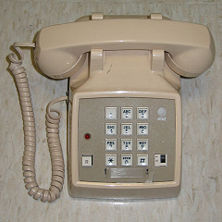
![]()
Телефон Touch Tone®
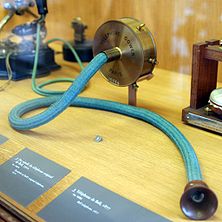
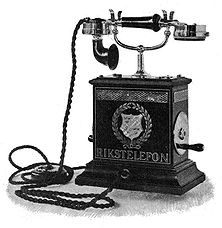

![]()
Старинный телефон
Телефо́н (др.-греч. τῆλε «далеко» и φωνή «голос», «звук») — устройство для передачи и приёма звука на расстоянии. Современные телефоны осуществляют передачу посредством электрических сигналов.
Содержание
- 1 История
- 1.1 Неэлектрические «телефоны»
- 1.2 Электрический телефон
- 2 Современность
- 2.1 Радиотелефон
- 2.1.1 DECT
- 2.2 ISDN
- 2.3 Мобильные телефоны
- 2.3.1 Сотовый телефон
- 2.3.2 Спутниковый телефон
- 2.3.3 Полевой телефон
- 2.4 IP-телефония
- 2.1 Радиотелефон
- 3 См. также
- 4 Ссылки
История
Неэлектрические «телефоны»
В целом, телефон — это любое устройство, способное передавать звук на большое расстояние. Самые первые телефоны были механическими приборами, которые базировались на распространении звука в сплошных средах (воздух) или другие физические средства, в отличие от электрических приборов, использующих электромагнитные сигналы.
Согласно письму в «Peking Gazette», в 968 году, китайский изобретатель Кунг-фу-винг создал thumtsein, который, вероятно, передавал звук через трубы. Разговоры через трубы используются и сегодня при передаче звука на небольшие расстояния между фиксированными точками (на судах, предприятиях и т. д.).
«Верёвочный телефон» также известен много веков. В нем две диафрагмы соединялись бечёвкой или проводом.
Электрический телефон
Тысячелетие за тысячелетием люди общались, только используя распространение звука в сплошной среде — воздухе. Для передачи сообщений на большие расстояния использовались примитивнейшие методы, вроде свиста, гонга или барабанного боя. Изобретению устройства, которое для передачи и приёма звука использовало бы свойства электричества, предшествовало появление электрического телеграфа и его успешное применение в течение первой половины XIX века.
1849—1854 гг. Шарлем Бурселем, инженером-механиком и вице-инспектором парижского телеграфа, разработана идея телефонирования. Первый принцип действия телефона Ш. Бурсель изложил в своей диссертации в 1854 году, но до практического осуществления телефонной связи он не дошёл. Ш. Бурсель был также первым, кто употребил слово «телефон».[источник не указан 1008 дней]
В 1860 году в США иммигрант итальянского происхождения Антонио Меуччи продемонстрировал устройство, которое могло передавать звуки по проводам, и названное им Telectrophon. Меуччи подал заявку на патент своего изобретения в 1871 году.
В 1861 году немецкий физик и изобретатель Иоганн Филипп Рейс продемонстрировал другое устройство, которое также могло передавать музыкальные тона и человеческую речь по проводам. Аппарат имел микрофон оригинальной конструкции, источник питания (гальваническую батарею) и динамик. Сам Рейс назвал сконструированное им устройство Telephon.
Телефон, запатентованный в США 1876 году Александром Беллом, назывался «говорящий телеграф». Трубка Белла служила по очереди и для передачи, и для приёма человеческой речи. В телефоне А. Белла не было звонка, позже он был изобретён коллегой А. Белла — Т. Ватсоном (1878 год). Вызов абонента производился через трубку при помощи свистка. Дальность действия этой линии не превышала 500 метров.
Александр Белл подал заявку в Вашингтонское патентное бюро на свое изобретение 14 февраля 1876 года. Двумя часами позже заявку на «Устройство для передачи и приема вокальных звуков телеграфным способом» подал Э. Грей из Чикаго.
7 марта 1876 года Александром Беллом был получен патент на изобретение телефона. Любопытно, что А. Белл пытался изобрести не телефон, а «гармонический телеграф». В то время в телеграфии испытывался огромный дефицит линий.
25 июня 1876 года. Александр Белл впервые продемонстрировал свой телефон на первой Всемирной электротехнической выставке в Филадельфии.
B 1877 году изобретатель Ваден применил для вызова абонента телеграфный ключ, который замыкал цепь звонка (позднее ключ был заменён кнопкой). В том же году петербургский завод немецкой фирмы «Сименс и Гальске» начал изготавливать телефонные аппараты с двумя телефонными трубками — одна для приёма другая для передачи речи.
B 1878 году русский электротехник П. M. Голубицкий применил в телефонных аппаратах конденсатор и разработал первый русский телефон оригинальной конструкции, в котором было применено несколько постоянных магнитов. В 1885 году Голубицкий разработал систему централизованного питания микрофонов телефонных аппаратов.
В 1877—1878 годах Томас Эдисон предложил использовать в угольных микрофонах вместо угольного стержня угольный порошок, то есть изобрёл угольный микрофон с угольным порошком, который практически без изменений проработал до 1980 года, а в некоторых местах работает до сих пор.
31 декабря 1898 года открылась телефонная линия Москва — Петербург.
Первый коммерческий телефонный разговор между Нью-Йорком и Лондоном произошёл 7 января 1927 по трансатлантическому телефонному кабелю. СССР был подключён к Нью-Йорку через этот кабель 14 апреля 1936 года. Первый звонок состоялся между наркомом связи и дежурным телефонно-телеграфной компании Нью-Йорка. Общение проходило на общепринятом на международных телефонных линиях французском языке.
До Карибского кризиса телефон для связи между странами был непопулярен. Связь тогда осуществилась с помощью политобозревателя Зорина, который связался с Эдвардом Кеннеди[источник не указан 429 дней]. Тогда же была налажена прямая линия между СССР и США.
История дальнейшего развития телефона включает в себя электрический микрофон, пришедший на замену угольному, громкую связь, тоновый набор, цифровое сжатие звука. Новые технологии IP-телефония, ISDN, DSL, сотовая связь, DECT.
Современность
Радиотелефон
Представляют собой систему, состоящую из базы, к которой подключаются аналоговые или цифровые абонентские линии от АТС, и одной или нескольких беспроводных трубок, которые могут как передавать между собой, так и звонить по внешним линиям. Работают на разных частотах. Раньше выпускались только аналоговые аппараты с несущей частотой несколько десятков мегагерц. Эти аппараты были подвержены помехам и иногда в своей трубке можно было слышать разговоры по такому же телефону из соседней квартиры. Такие телефоны, в основном, были оснащены только одной трубкой.
Затем в продаже появились телефоны с несущей частотой 900 мегагерц и цифровым кодированием сигнала. В этих приборах качество звука лучше, увеличена дальность надёжной работы и исключено случайное подслушивание вашего разговора соседями. Следующим шагом были телефоны с несущей частотой 2.4 ГГц. Эти аппараты иногда делали с несколькими трубками, увеличена дальность связи и качество звука.
В последнее время в продаже появились телефоны с несущей частотой 5.8 ГГц, имеющие дальность связи иногда достаточную, чтобы работать в пределах квартала с хорошим качеством звука. Эти телефоны часто позволяют подключать несколько трубок и обычно могут работать без взаимных помех в квартирах, оборудованных другими беспроводными устройствами (например, с беспроводным интернетом). Данные несущих частот работы телефонов приведены для телефонов, продающихся в США и Канаде.
DECT
Основная статья: DECT
Представляют собой лёгкую систему, состоящую из базы, к которой подключаются аналоговые или цифровые абонентские линии от АТС, и одной или нескольких беспроводных трубок, которые могут как передавать между собой, так и звонить по внешним линиям. Работают на частотах 1880—1900 Мегагерц. Радиус действия 50—300 метров.
ISDN
Основная статья: ISDN
Система, призванная повысить качество телефонной связи и позволить мультиплексировать голос и данные на одной абонентской линии. Абонентский интерфейс BRI (англ. basic rate interface) представляет собой два пользовательских ОЦК (B-каналы) и канал сигнализации 16 кбит/с (D-канал), мультиплексированные с разделением по времени.
Мобильные телефоны
Сотовый телефон
Система радиосвязи, направленная на то, чтобы обеспечить пользователя связью в любом месте. Состоит из большого количества базовых станций, связанных между собой центральными коммутаторами, и сотовыми телефонами. Сотовый телефон при включении регистрируется на ближайшей базовой станции и, если на его номер звонят, центральный коммутатор находит телефон и переводит на него вызов через ближайшую базовую станцию.
Во время движения звонок передается от одной базовой станции к другой (handover). Базовые станции называются вышками сотовой связи, существуют микровышки с радиусом вещания 60-100 метров, средние 100—2000 метров и макровышки 2000-10000 метров.
Спутниковый телефон
Полевой телефон
IP-телефония
Основная статья: VoIP
Технология, направленная на то, чтобы передавать голос, оцифрованный и сжатый с помощью цифровых методов через сети, построенные на IP-технологии. Например, через Интернет. Позволяет значительно удешевить разговоры на большие расстояния. В числе недостатков — проблема задержки сигнала, связанная с особенностями IP-технологии. Начиная с 2005 года, использование специализированных программ (например, Skype) сделало IP-телефонию более доступной, хотя и не бесплатной.
См. также
- Мобильный телефон
- Спутниковый телефон
- Конференц-телефон
- Видеотелефон
- IP-телефон
- Таксофон
- Телефония
- Телефонная розетка
- Телефонный распределительный провод
- Автоматическая телефонная станция (АТС)
- Телефонный люк
- Домофон
- Модем
- Телефонный эфир
- Автодозвон
- Телефонный автоответчик
- АОН (Автоматический Определитель Но́мера)
- Унифицированный аппарат
- Катушка Пупина
Ссылки
- BBC : Белл не изобретал «Телефон»
- Средства проводной связи (1914—1945) в «Радиомузее РКК»
- Телефоны СССР начала 60-х годов
В 2018 г. первые представители поколения нулевых достигнут совершеннолетия. Они выросли в мире, где беспроводный мобильник давно стал обыденностью, большинство из них привыкли относиться к стационарному телефону с дисковым набором как к экзотике. А те, чье детство и юность прошли в «домобильную эпоху», прекрасно помнят достоинства и недостатки таких аппаратов. Давайте же вспомним особенности подобных устройств, а также узнаем историю их появления.
История появления телефонов
Человечество все века мечтало найти способ быстрой передачи информации. Первым грандиозным прорывом в этой сфере стало изобретение телеграфа. Воодушевленные этим прибором, многие мечтали об аппарате, который будет передавать не только сигналы, но и звук.
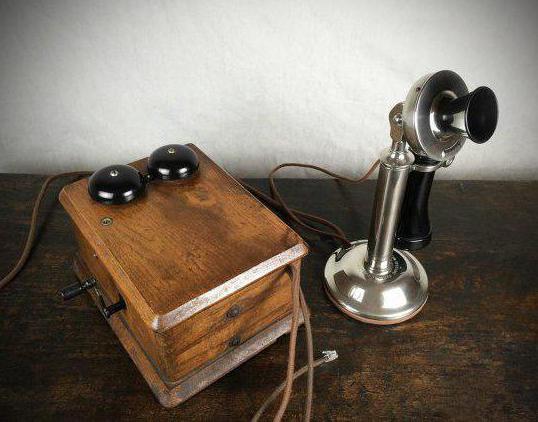
Впервые концепция телефона и его название (сочетание греческих слов «далеко» и «голос») были придуманы французским инженером-механиком Шарлем Бурселем в средине XIX в. Однако дальше теории он не пошел.
Первый аппарат, который можно считать телефоном в привычном для нас смысле, был изобретен в 1860 г. американцем Антонио Меуччи. Будучи пионером в этой сфере, Меуччи попытался запатентовать свое изобретение, но его опередил Александр Белл, который до 2002 г. считался конструктором первого телефонного аппарата. Будучи не только отличным изобретателем, но и великолепным бизнесменом, Белл сумел сделать состояние на телефоне. Многие годы он был лидером в данной сфере. Это достигалось не только за счет оригинальных идей самого ученого, но и за счет того, что его компания успешно скупала и внедряла в жизнь идеи и патенты других.
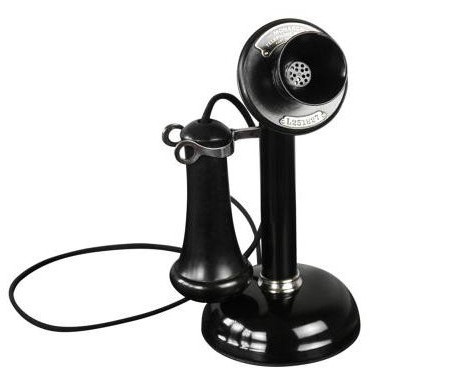
Первые телефонные аппараты были связаны непосредственно друг с другом. Из-за этого абоненты не могли звонить больше никому, что было весьма непрактично. В дальнейшем все устройства стали соединять с центральной станцией, в которой телефонистки распределяли звонки по номерам. Через время эта система стала автоматизированной.
Изобретение телефонов с дисковым набором
Появлением дискового аппарата мир обязан паранойе гробовщика из Канзас-Сити по имени Алмон Строуджер. Во время очередного кризиса он решил, что уменьшение количества его клиентуры связано с тем, что подкупленная телефонистка соединяет всех звонящих в контору Строуджера с его конкурентами. Прав он был или нет, история умалчивает, однако, чтобы обезопасить себя, гробовщик начал искать способ звонить без участия посредников.
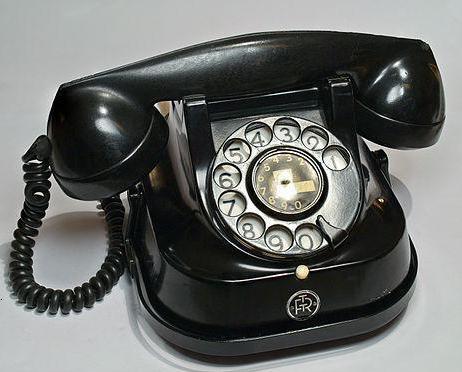
После шести лет работы над этим проектом, в 1897 г. компания Алмона Строуджера представила миру первый действующий дисковый телефон. Успех его изобретения был колоссален, и вскоре компания гробовщика стала серьезным конкурентом фирме Белла. Однако Строуджер к тому времени охладел к своей идее. Выгодно продав свои патенты, он удалился на покой.
Первые модели дискового телефона не имели отверстий для пальцев. Вместо них на аппарате присутствовали специальные зубцы. Лишь с 1902 г. появились привычные отверстия, и на тот момент они занимали почти всю окружность диска.
В дальнейшем компания Александра Белла перекупила патенты Строуджера и сама стала выпускать аппараты нового образца.
Появление дискового телефона в СССР
В Советском Союзе первые устройства с дисковым набором номера были внедрены по приказу В.И. Ленина в 1918 г. в Кремле. Они были частью правительственной засекреченной системы связи и назывались «вертушками». Этот термин и по сей день используется в значении «телефон начальника».
Вплоть до 1968 г. в СССР номера абонентов были гибридными, по этой причине на старых дисковых телефонах были обозначены не только десять цифр (0-9), но и буквы (А, Б, В, Г, Д, Е, Ж, И, К, Л).
На протяжении всего периода существования Советского Союза аппараты для связи всегда были дефицитом, впрочем, как и получение собственного абонентского номера.
В начале восьмидесятых приборы с дисковым набором постепенно стали вытесняться кнопочными аналогами. Чаще всего они были импортного производства.
В девяностые на просторы бывшего СССР хлынула лавина кнопочных телефонных аппаратов из Китая, которые были более простыми и удобными, нежели их дисковые собратья. На протяжении десятилетия последние были практически полностью вытеснены из употребления. А с приходом мобильной и CDMA связи стационарная телефония вообще стала сдавать свои позиции.
Что такое импульсный набор и чем он отличается от тонального
Главным отличием дискового телефона от кнопочного был механический способ набора номера – импульсный. Его суть в том, что каждая из цифр передается на АТС с помощью последовательного замыкания/размыкания телефонной линии – импульсов. Их число соответствует выбранной на диске цифре. Чтобы количество импульсов одного числа отделять от другого, между ними оставлялись более длительные паузы. Данный принцип напоминает отстукивание азбуки Морзе.
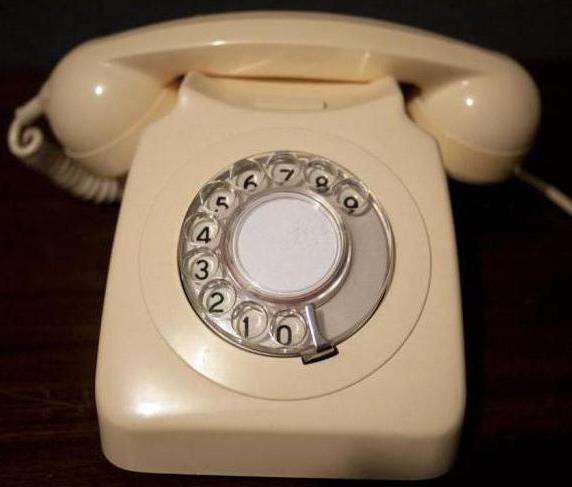
В кнопочных стационарных и мобильных телефонах все намного проще, для связи здесь используются тоновые сигналы разной частоты для каждой цифры.
Кнопочный или дисковый набор: что быстрее
Помимо тонового сигнала, дисковый телефон уступает кнопочному и в скорости связи с абонентом.
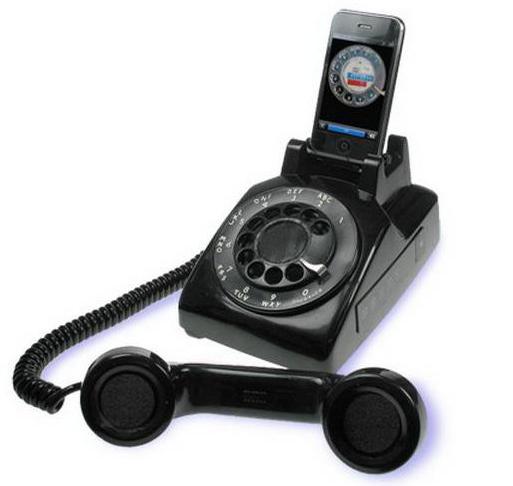
Дело в том, что в аппарате с клавишами нужный номер набирается в считаные секунды простым нажатием кнопок. В случае с дисковым телефоном нужно больше времени. Дело в том, что для набора каждой из цифр приходится крутить диск до упора и ждать, пока он вернется в начальную позицию.
Современный аналог
Хотя сегодня аппараты с дисковым набором номера остались лишь в отдельных государственных организациях (не имеющих средств на их замену), а также у стариков, в последние годы они снова начинают пользоваться популярностью. Но не из-за их функциональных особенностей (в этой категории они уже давно морально устарели), а из-за пропагандируемой любви к старинным вещам.
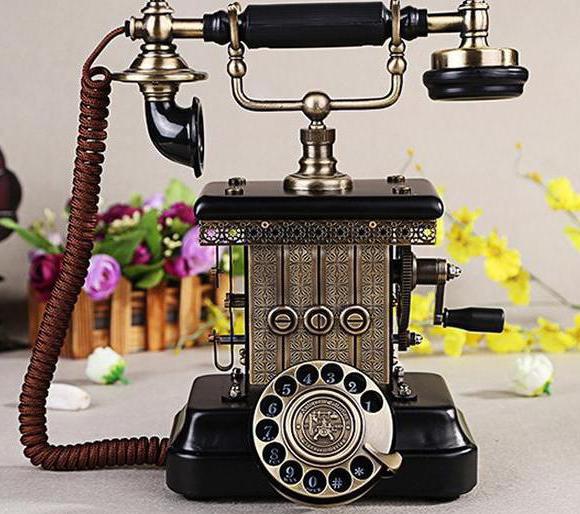
Подчиняясь современным веяниям, многие компании сегодня возобновили производство дисковых ретро-телефонов. Также существует целая линейка аксессуаров с дисковым устройством для смартфонов, а также программы, имитирующие это приспособление.
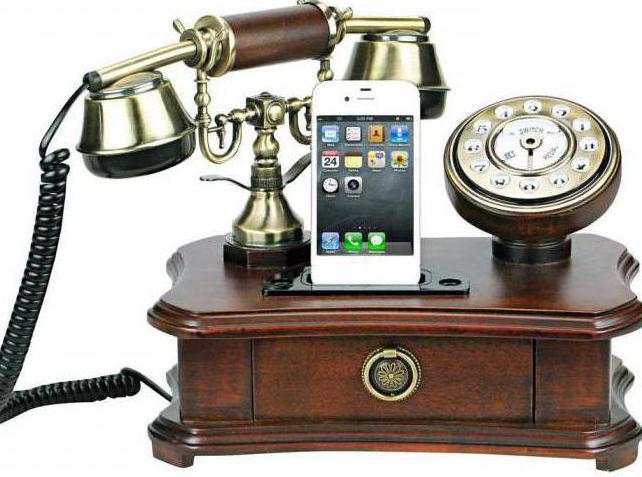
Стоит отметить, что данная востребованность – это всего лишь дань моде и не более, поскольку кнопочный аппарат все равно по всем параметрам превосходит дисковый телефон.

